fall inside a hole
C-12 (1974)
First written November 6, 2023Expanded August 2024, July 2025

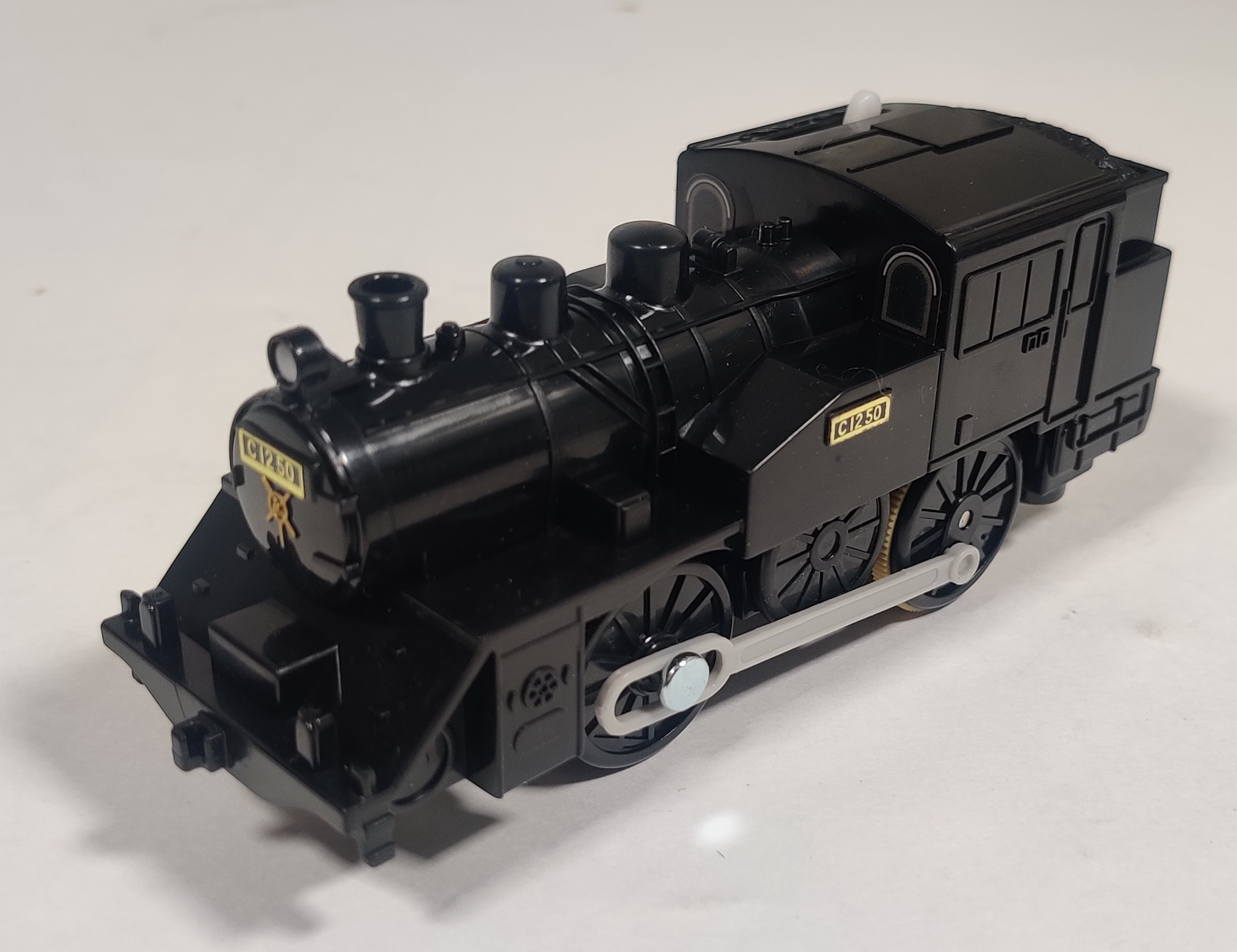
282 C12 class steam locomotives were built to service simple branch lines between 1932 and 1947. Small and lightweight, many were later used for shunting duties and some remained in use on older branch lines until the 1970s when the lightweight DD16 class diesels were produced to fit the weight requirements of older lines.

The Plarail C12 first appeared in the C12 Rotary Snowplow set in 1973, a sought-after Plarail set from the era that can be seen in the Plarail Museum (or partially seen in the 1999 Plarail 40th Anniversary Memorial Video as shown above, although the C-12 used has the newer style of side rods). In 1974 the C12 was released in a traditional three-car set with period freight cars and starting in 1976 it became a staple of the individual locomotive releases. The original Plarail C12 has a much larger boiler proportionally than the real engines had to accommodate a C battery, and later AA powered C12s were redesigned to have a more realistic boiler.
C-12 Freight Train (1974)
The first individual C12 release was in a third-generation lift-off type box and included the period well bolster wagon and auto carrier with car as C12かもつれっしゃ (C12 Freight Train). A boxed example of this release can be seen in the Plarail Museum. The train was also included in the No.1-style C-12 Train Crossing Set. Early C12s have metal crank pins and an earlier side rod design also used on period D51s, and it appears the transition to new side rods happened towards the end of the C12 Freight Train being on sale.
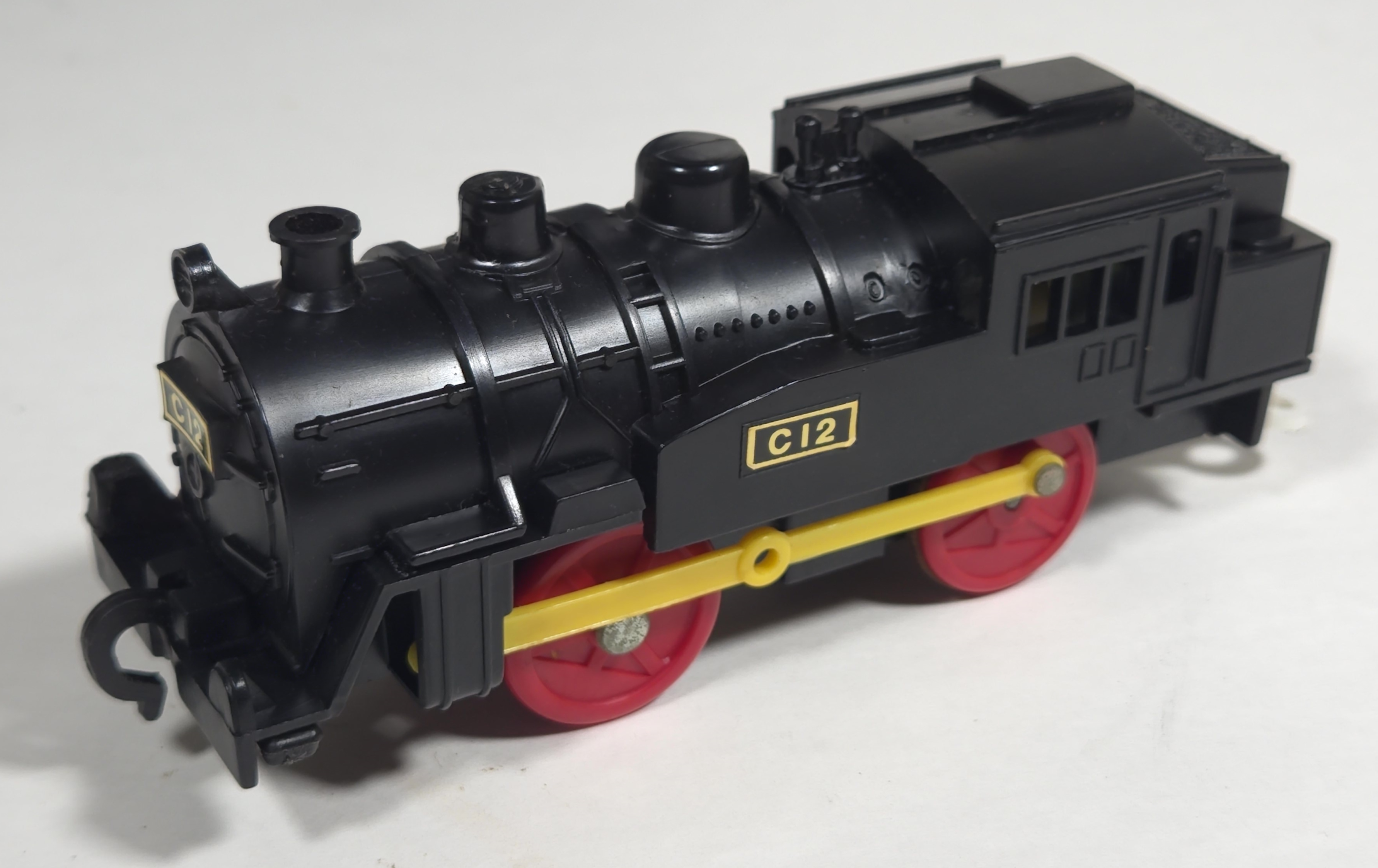
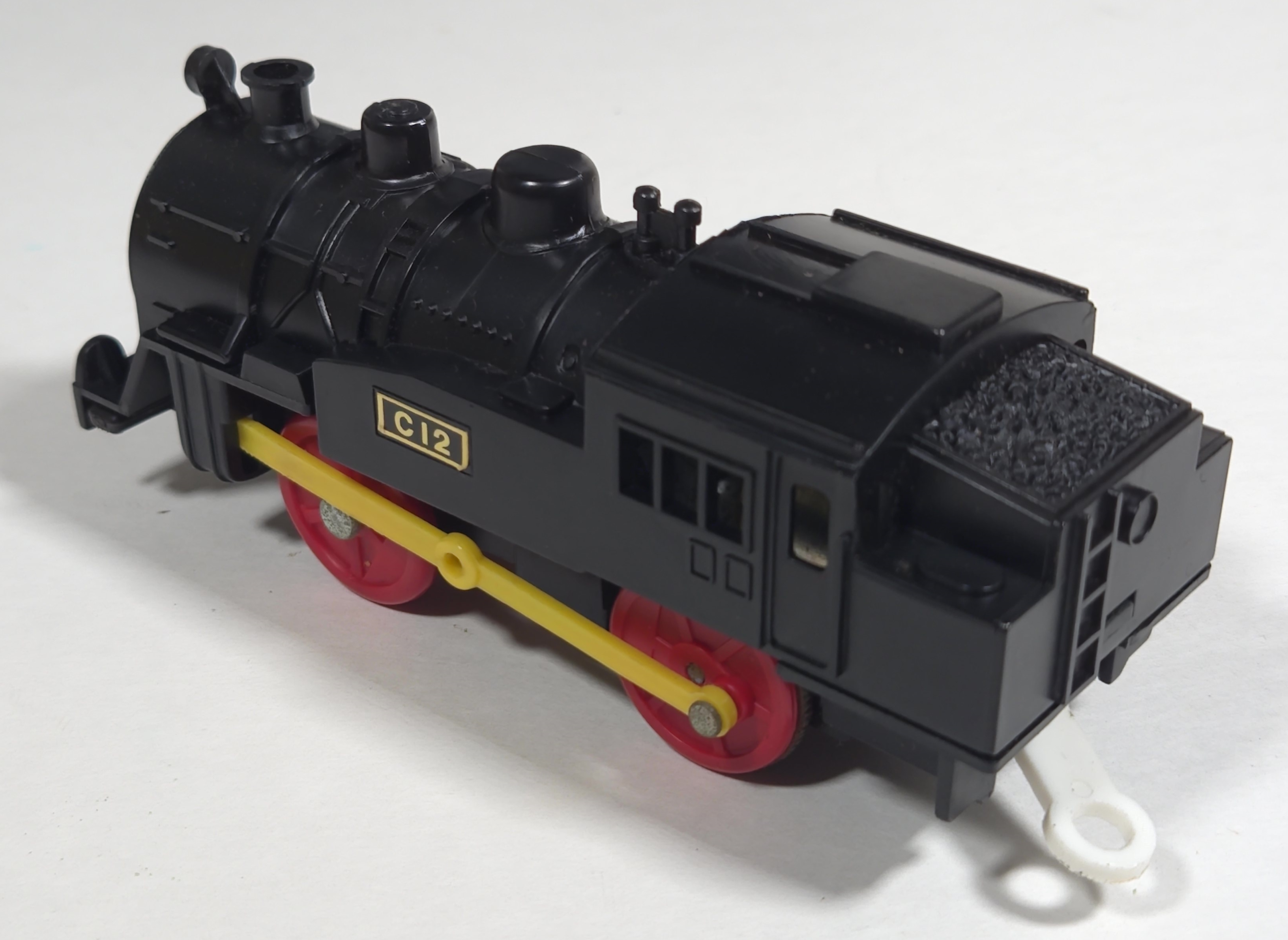
Also in 1974 and continuing production into 1975, the C-12 was included in the C-12 Logging Railway Set. These are the same as the earlier C-12 Freight Train locomotives with metal crank pins and clicking chuffer, but I don't presently have the correct type of freight cars to represent the freight train properly, so here it is with the log tippers from the set.
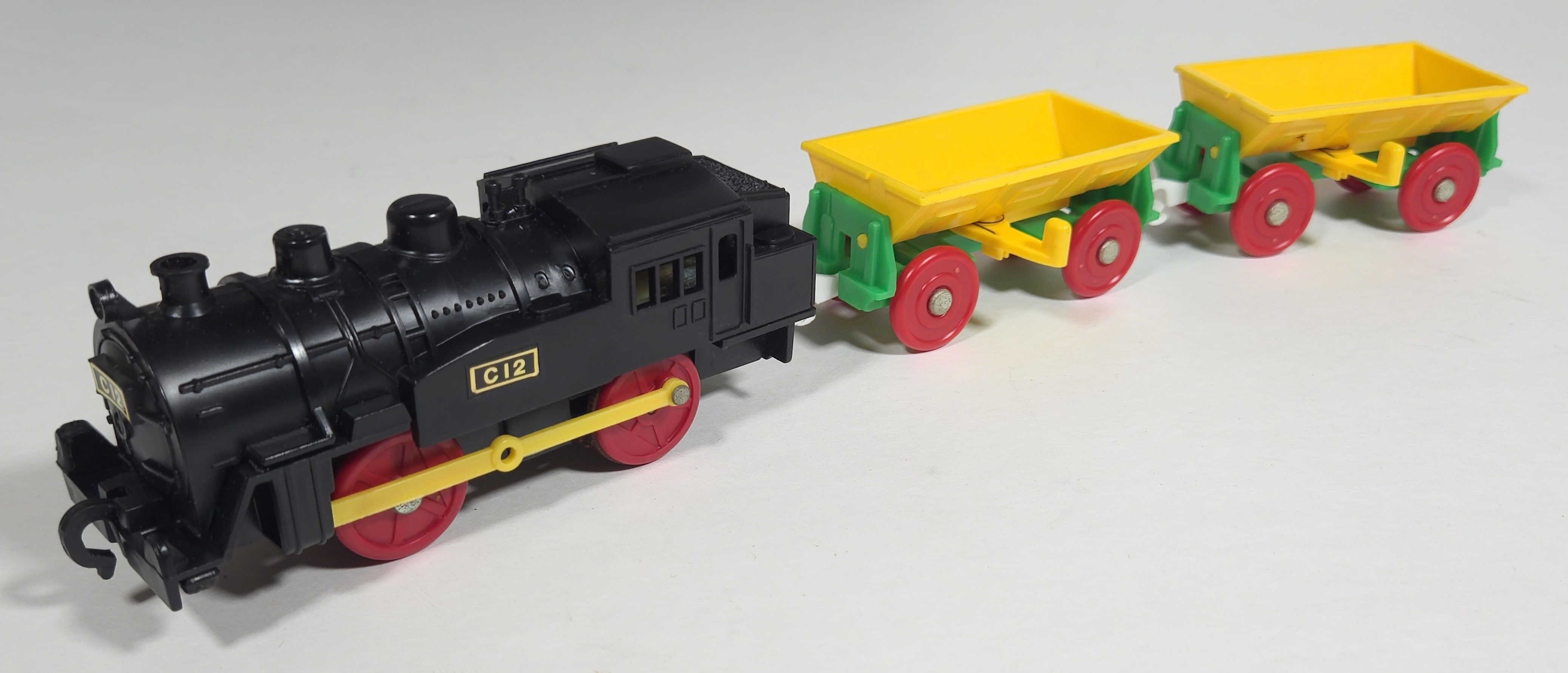
The early C-12 also appeared in a 1974 Plahighway crossover set, with short box van and log car.
C-12 (1976)
In 1976 the C12 was released as a single item for the first time in a fourth generation "train" box with the updated coupling rods. In 1978 it was rereleased again in fifth generation "EC" packaging.
"Round Trip"/Hong Kong C-12s (late 1970s)
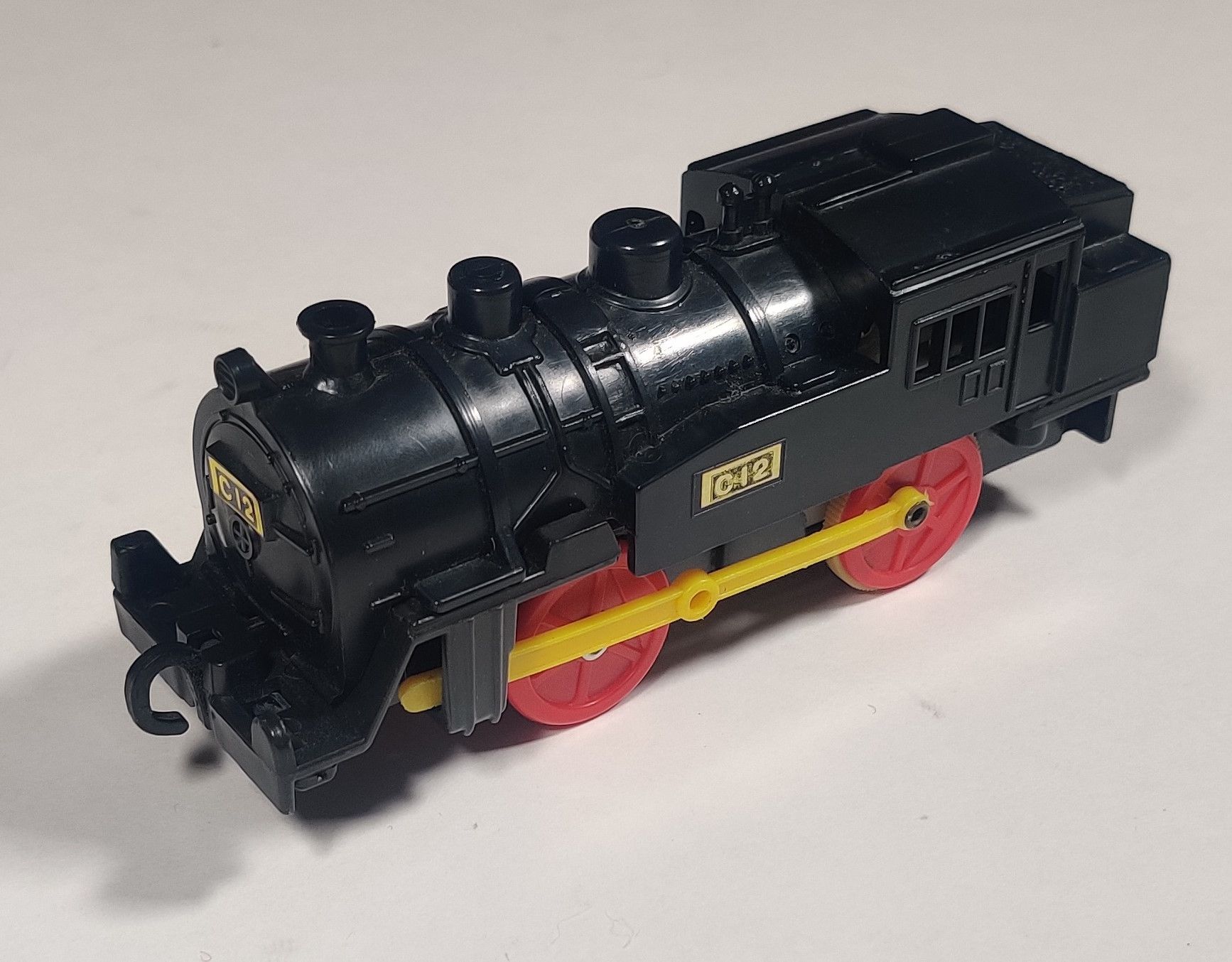
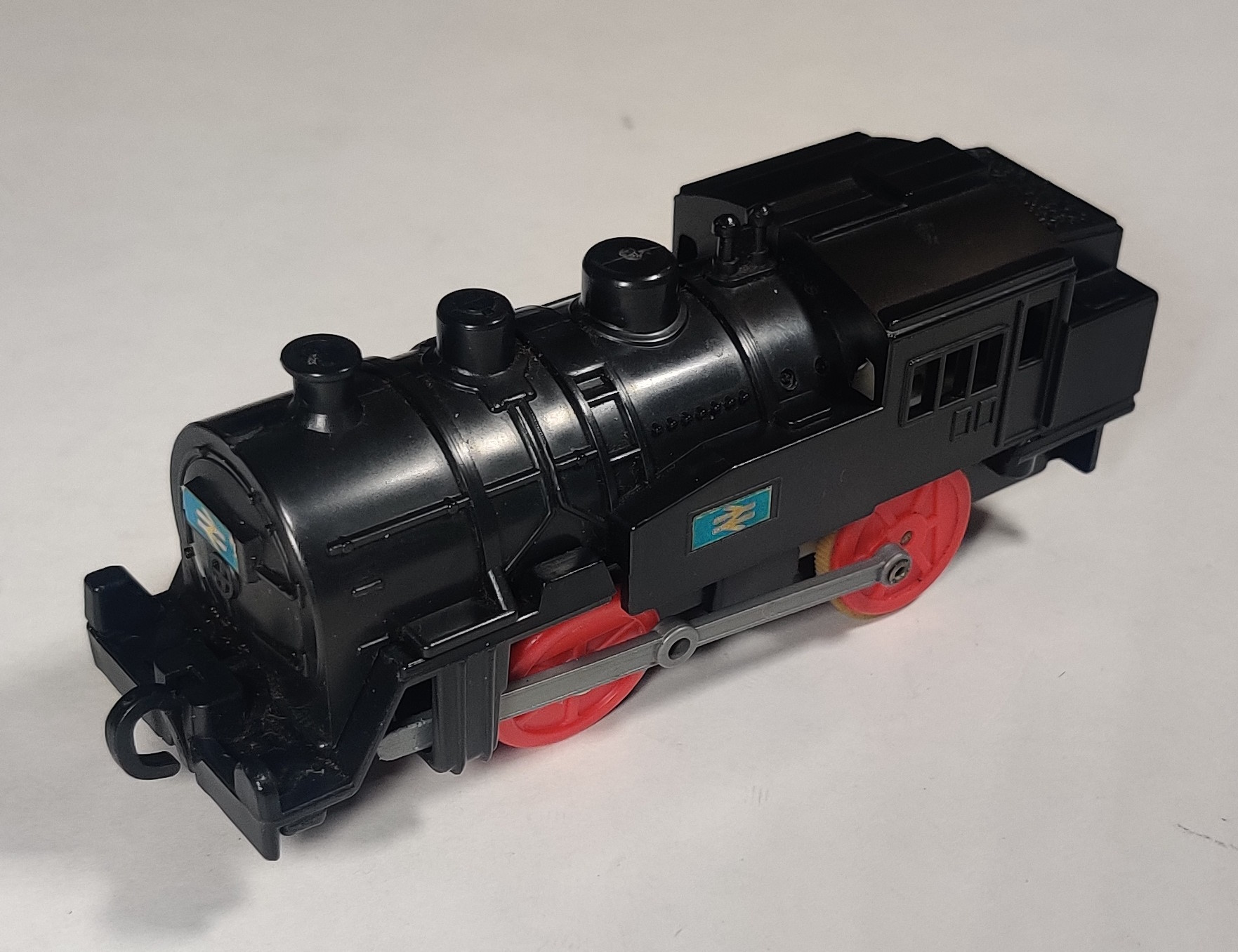
In the late 1970s Tomy began producing some C12s for Palitoy and Stelco export sets. West German Stelco C12s look more or less standard externally while the Palitoy U.K. exports have grey side rods and British Rail-style arrow stickers. These C12s were produced in Hong Kong and seem to have been originally developed as a reversing Round Trip C12, with the gearbox and chassis toolings having remnants from the reversing mechanism. More details about these Hong Kong-made C12s can be seen here.

Click for video with sound
C-12 (1987)
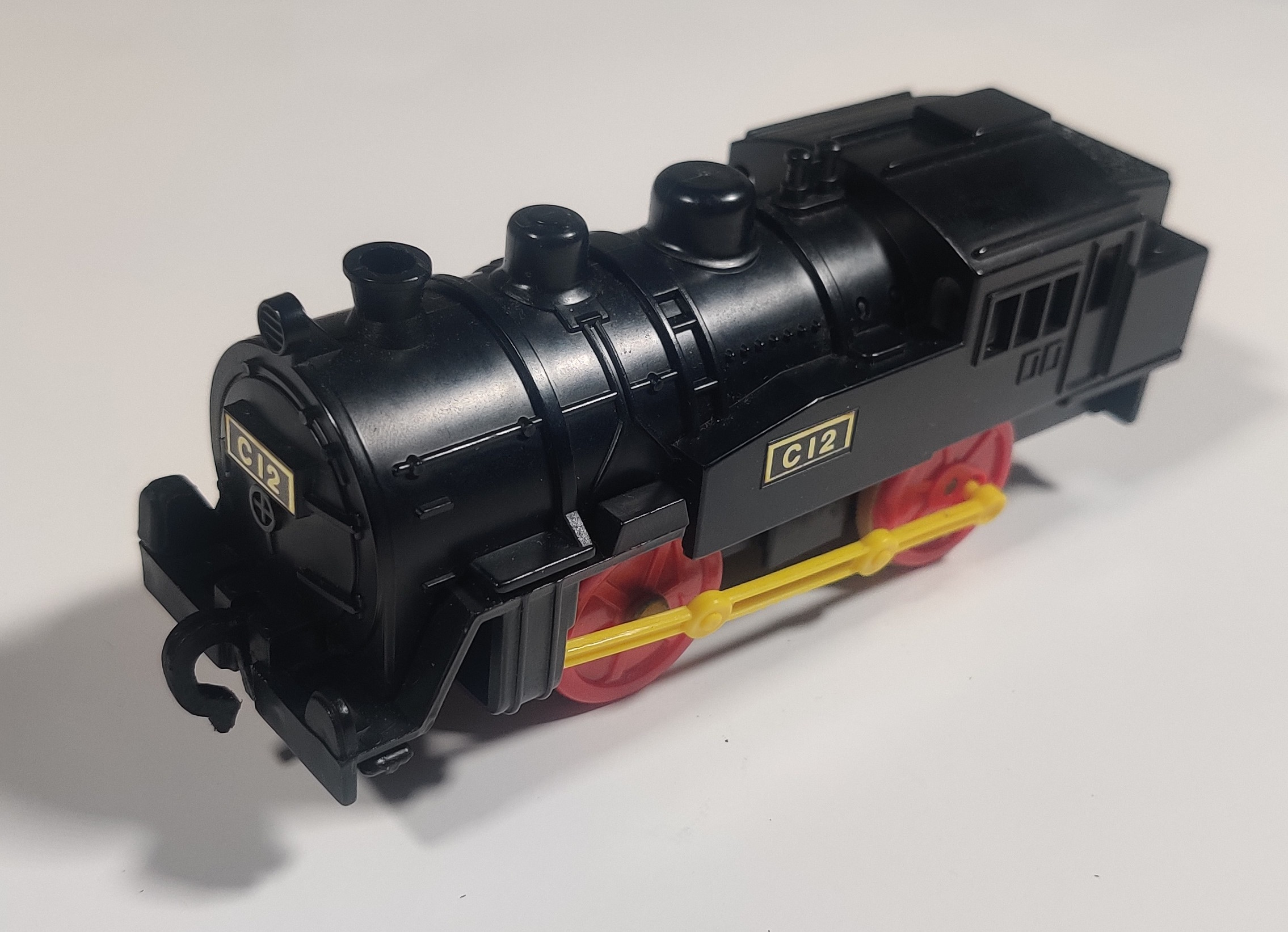
The first sixth generation C12s were made in Japan old power C12s like their earlier 1980s counterparts.

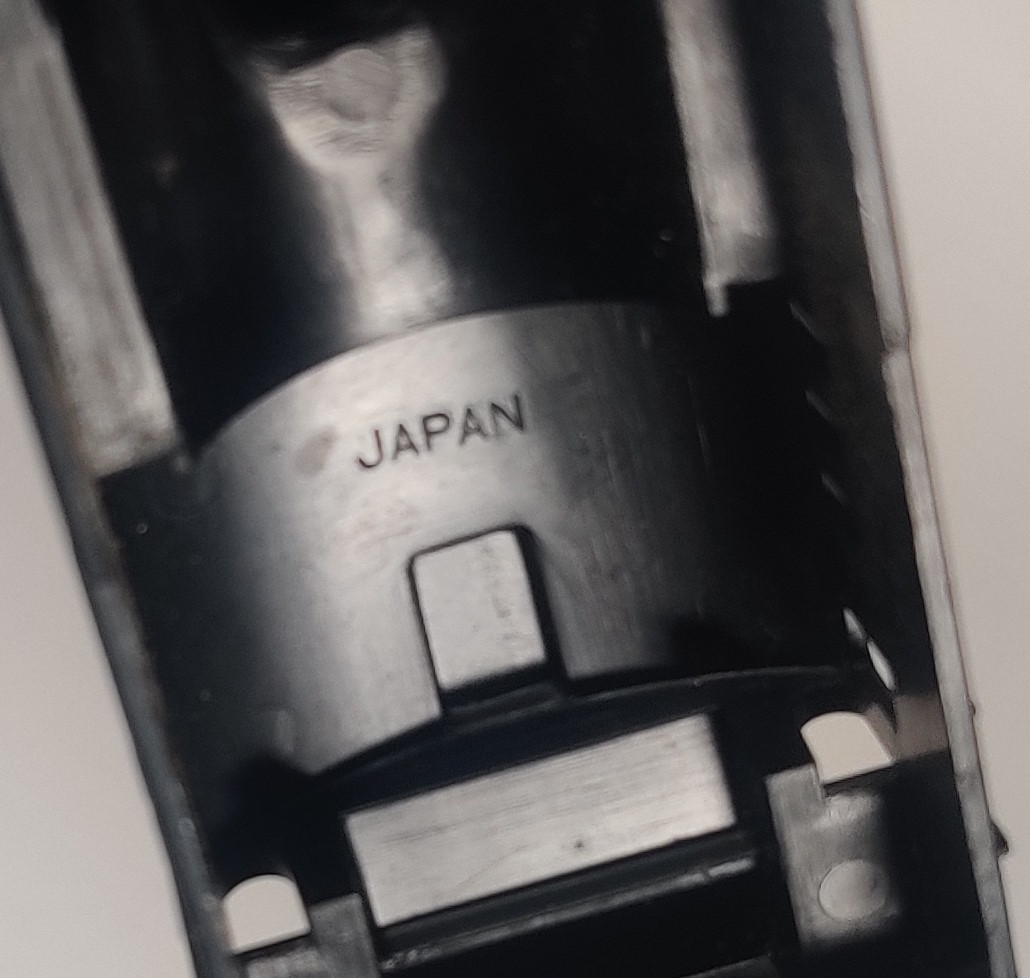
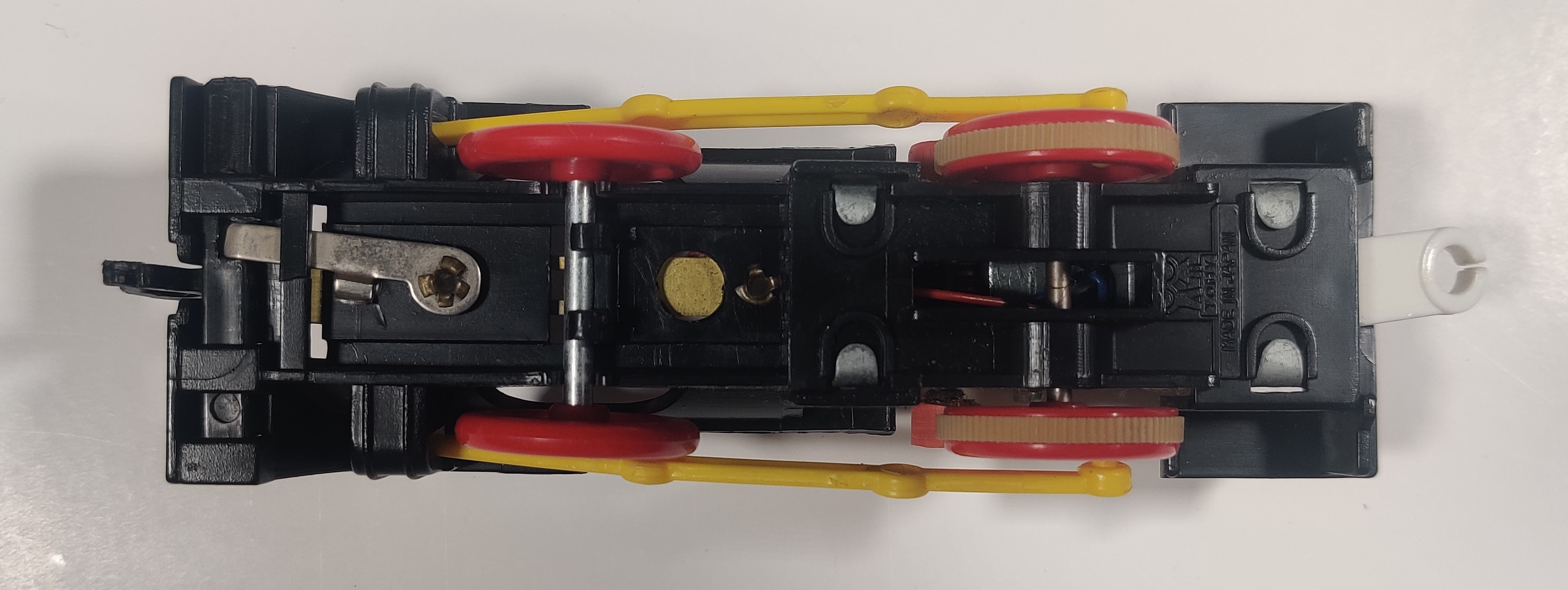
These C12s have all the features of the previous releases including the all-metal old power gearbox with clicking "chuffing" noisemaker and the sliding front lamp power switch. The battery contact strips are brass and the shell and chassis are both marked Japan. Before the introduction of production code stickers in body shells in the early 1990s, there was no obvious indicator of a particular production period. It is possible my Japan-made C12 is actually older than 1987, but based on the other trains in the lot it came from it is likely a late Japan-produced C12.
Around 1991 production of old power D51 and C12s both moved to Thailand and new Thailand-made C-12s were released in sixth generation packaging.

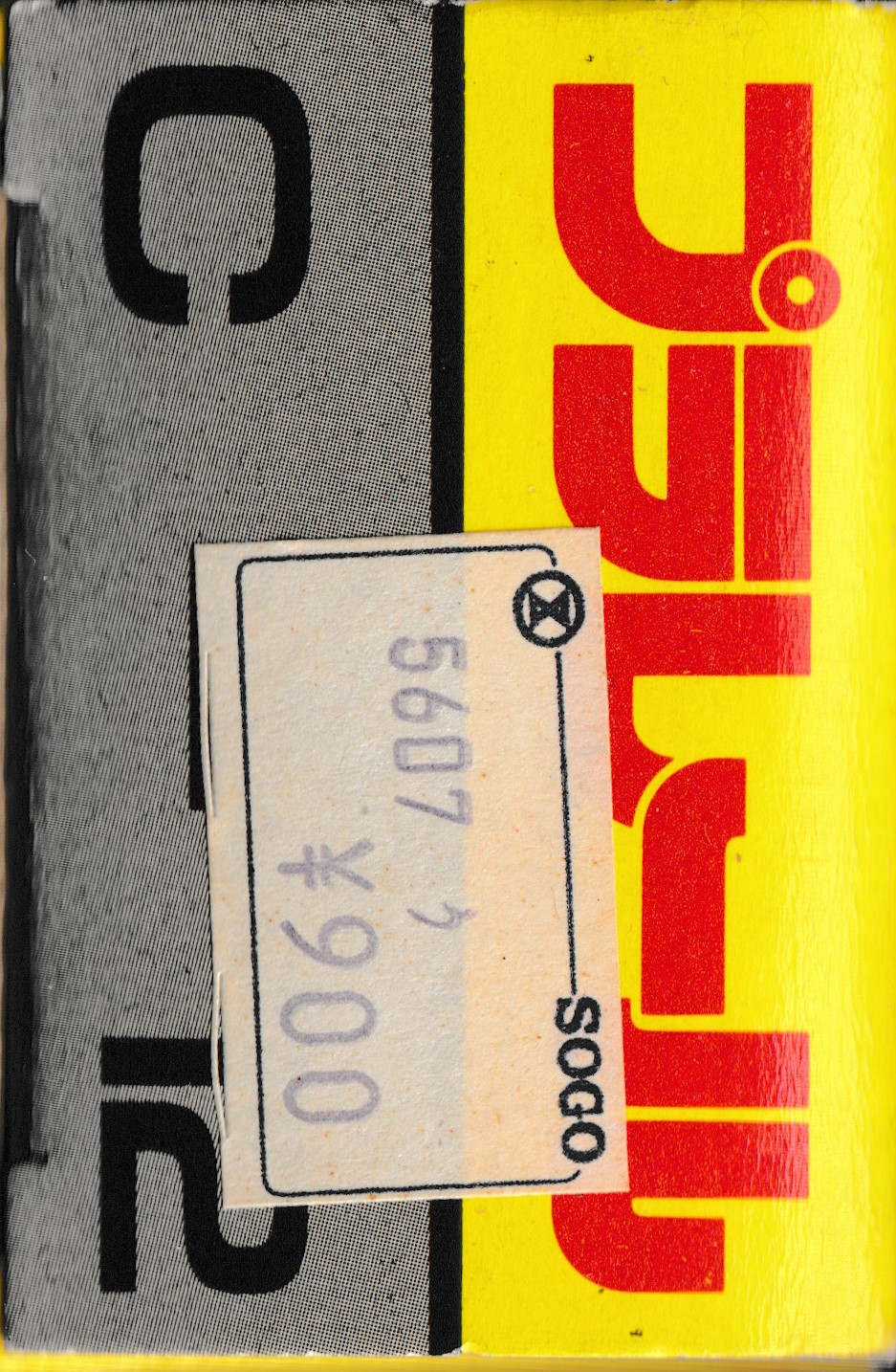
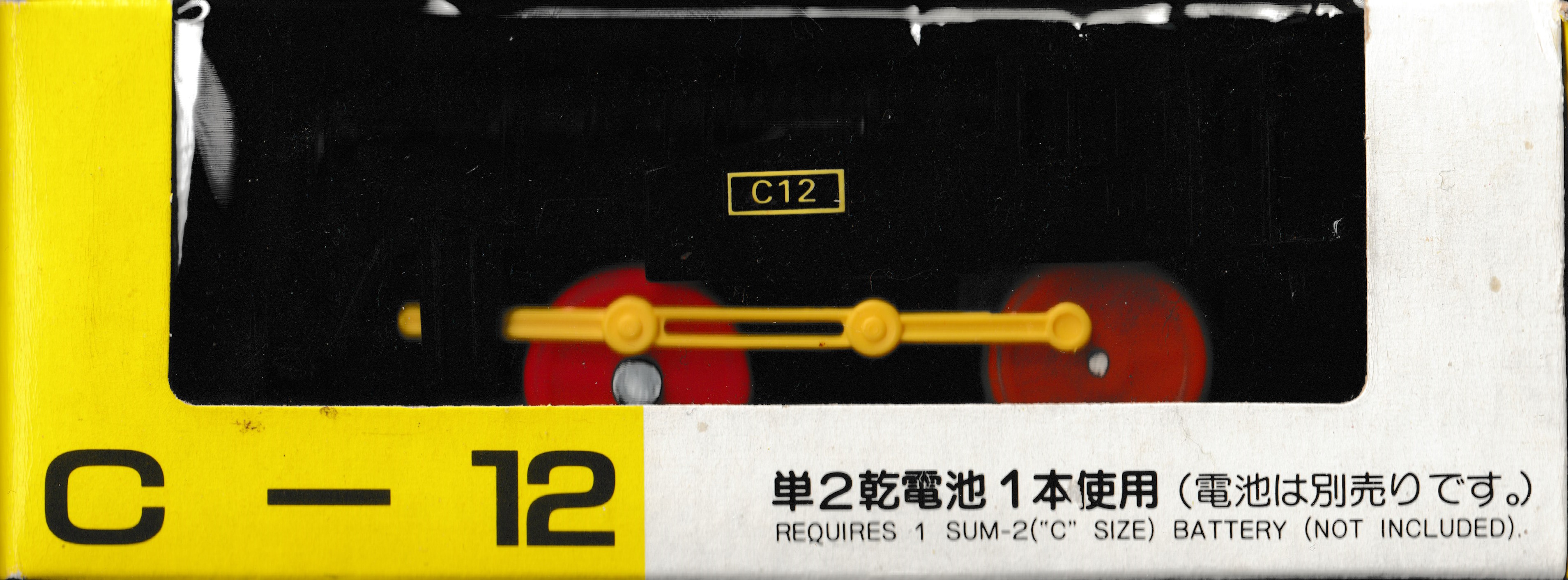
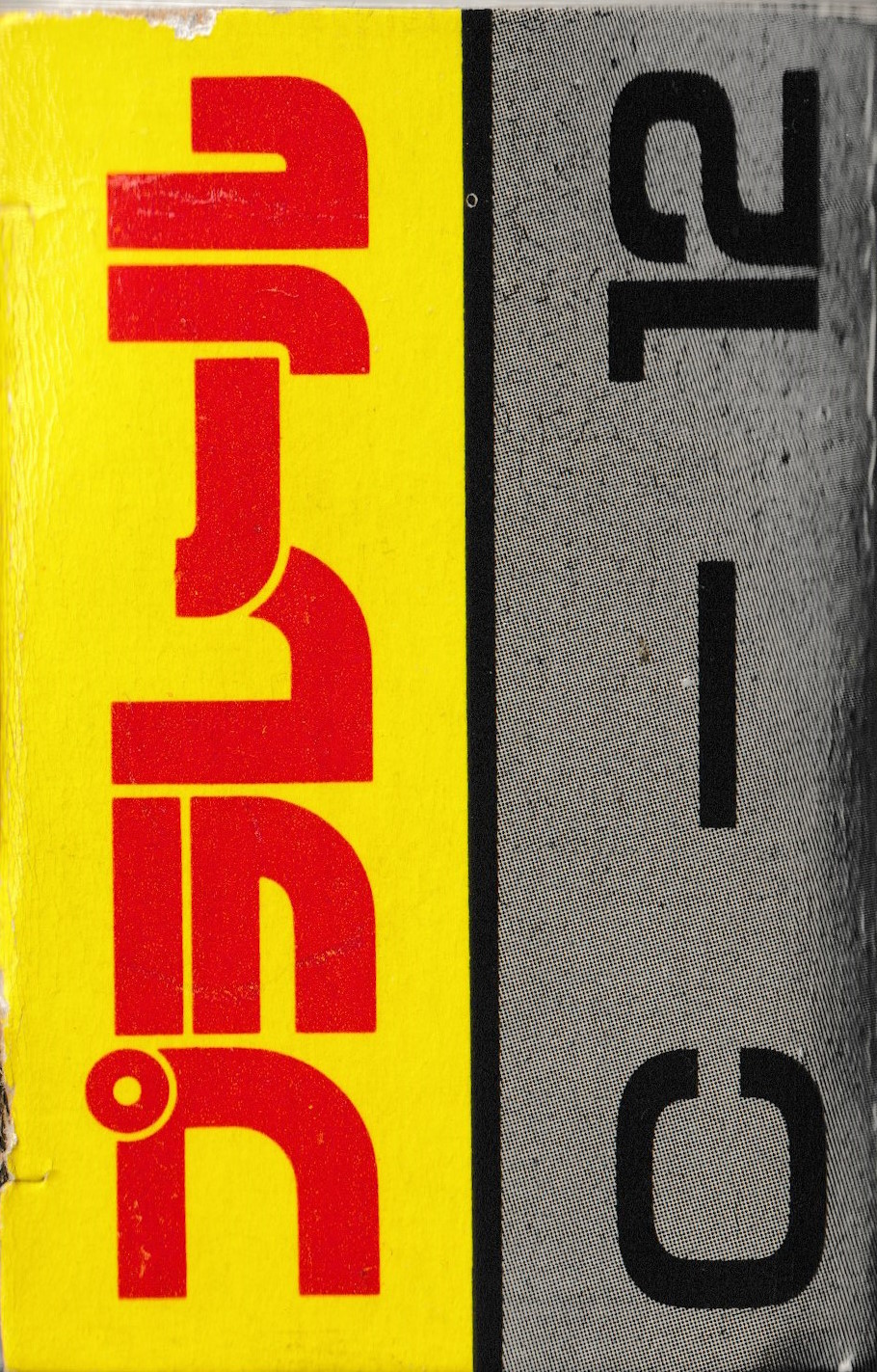

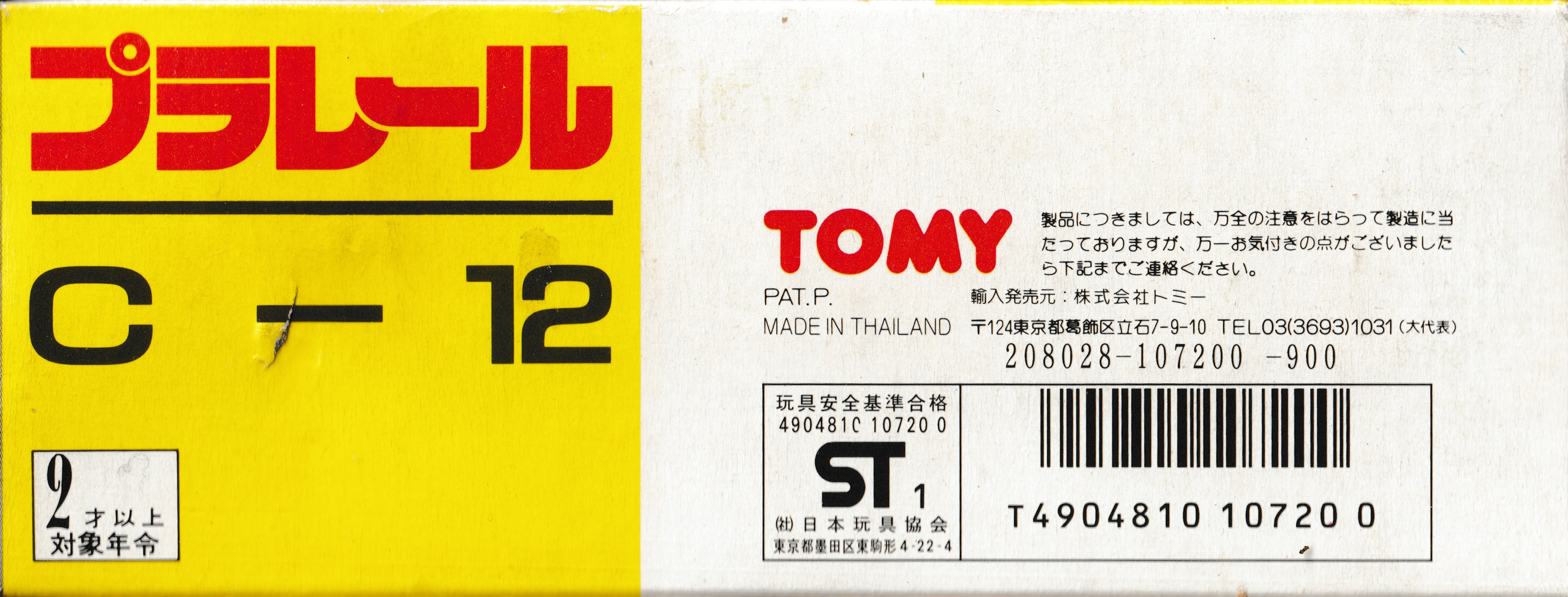
My boxed sixth generation C-12 is this 1991 Thailand issue. The box includes original styrofoam inserts and replacement parts leaflet.
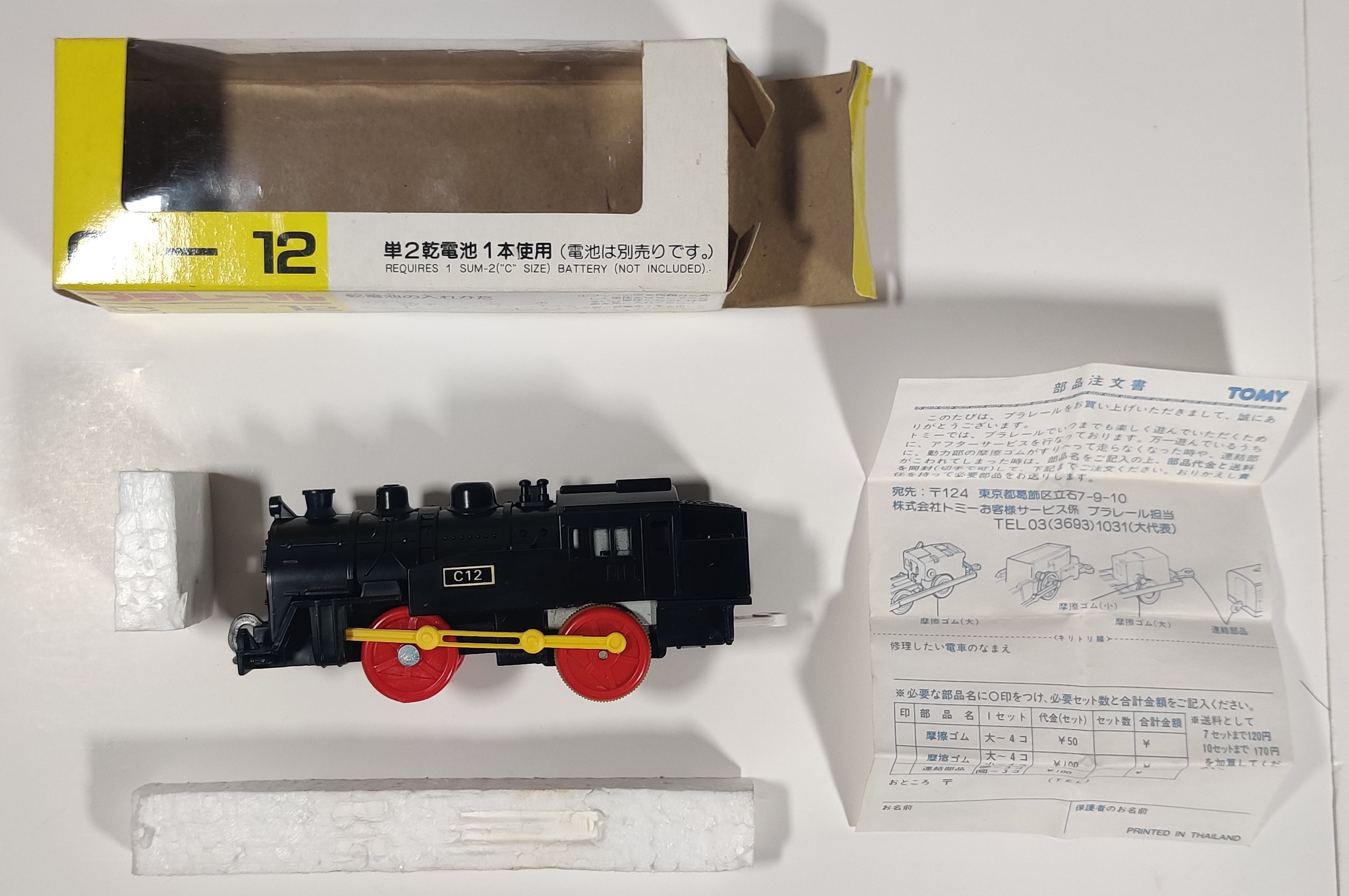
The C12, D51, and Mickey Poppo are, as far as I know, the only old power friction-drive engines to have been produced in Thailand, with every other straggling old power engine (EF66, DD51...) being produced in Japan until being converted to new power when moved to Thailand.
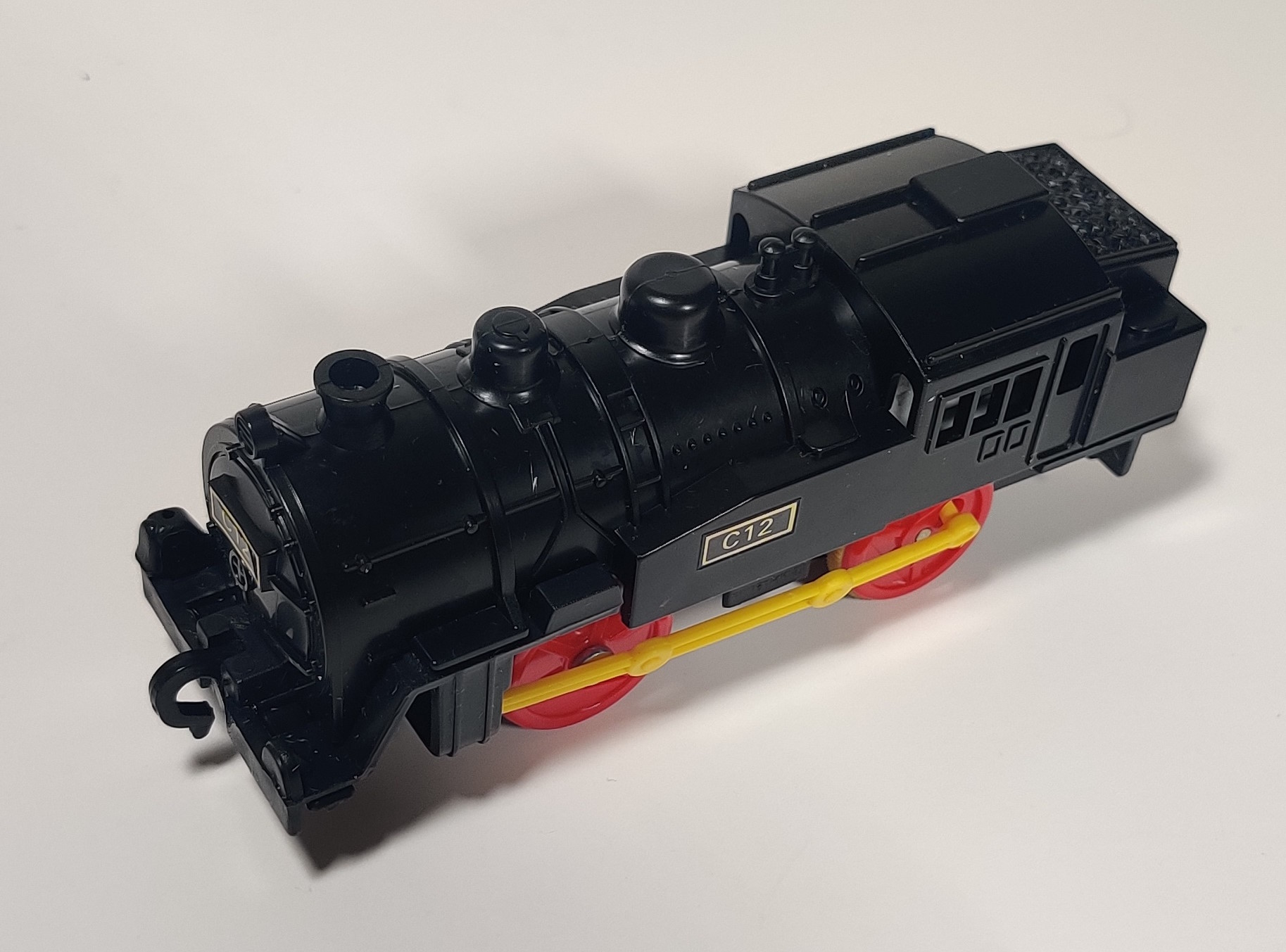
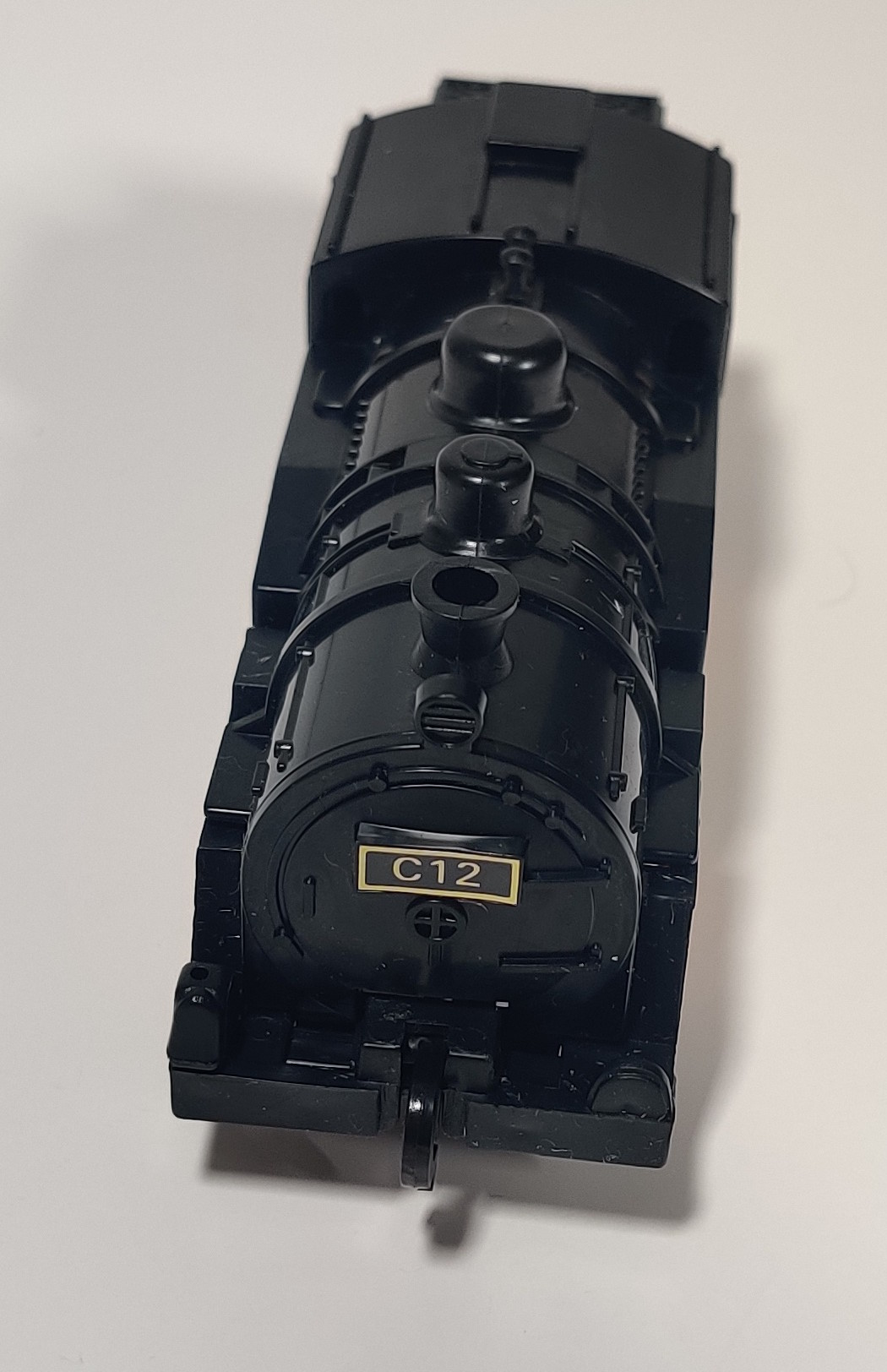
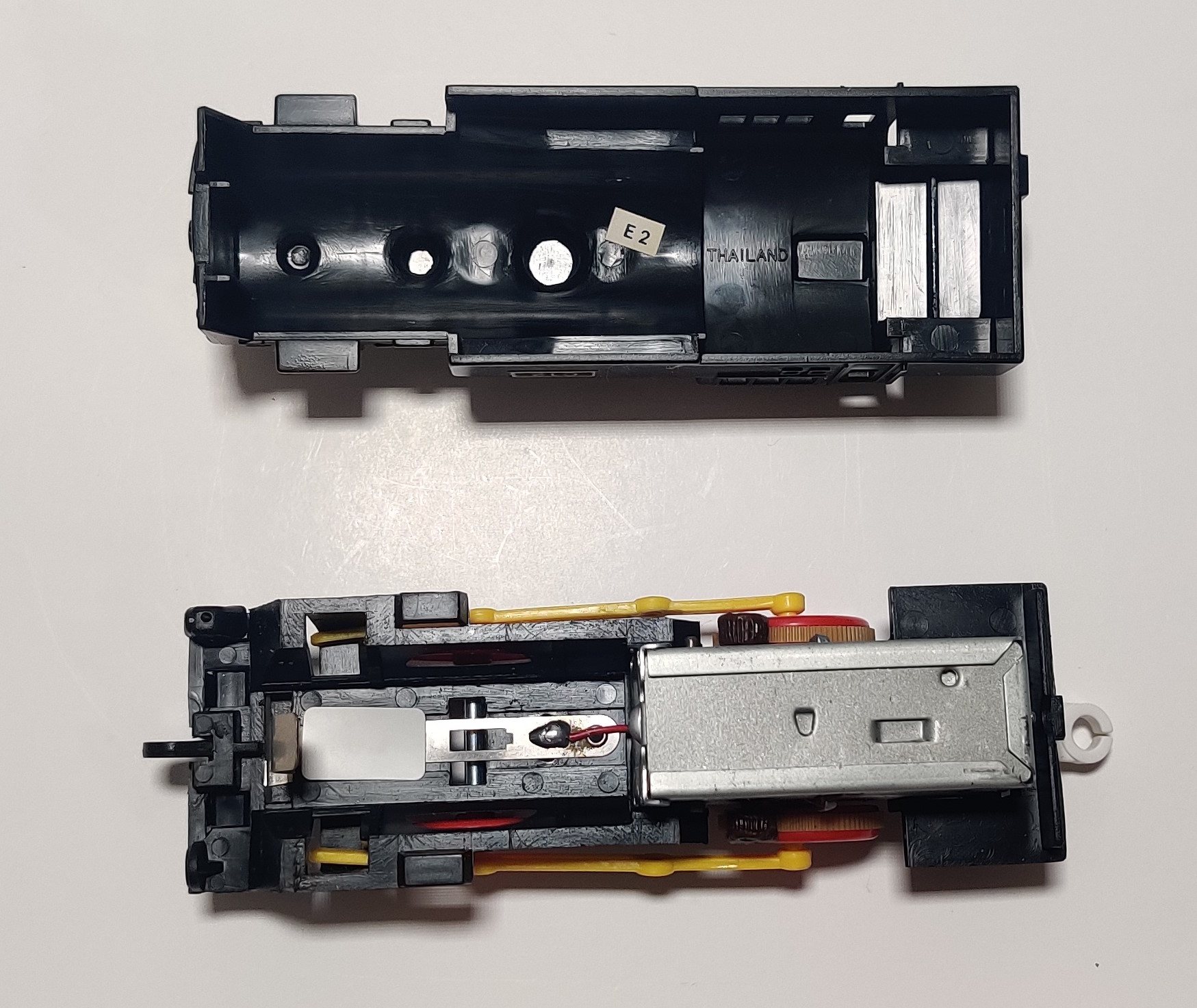
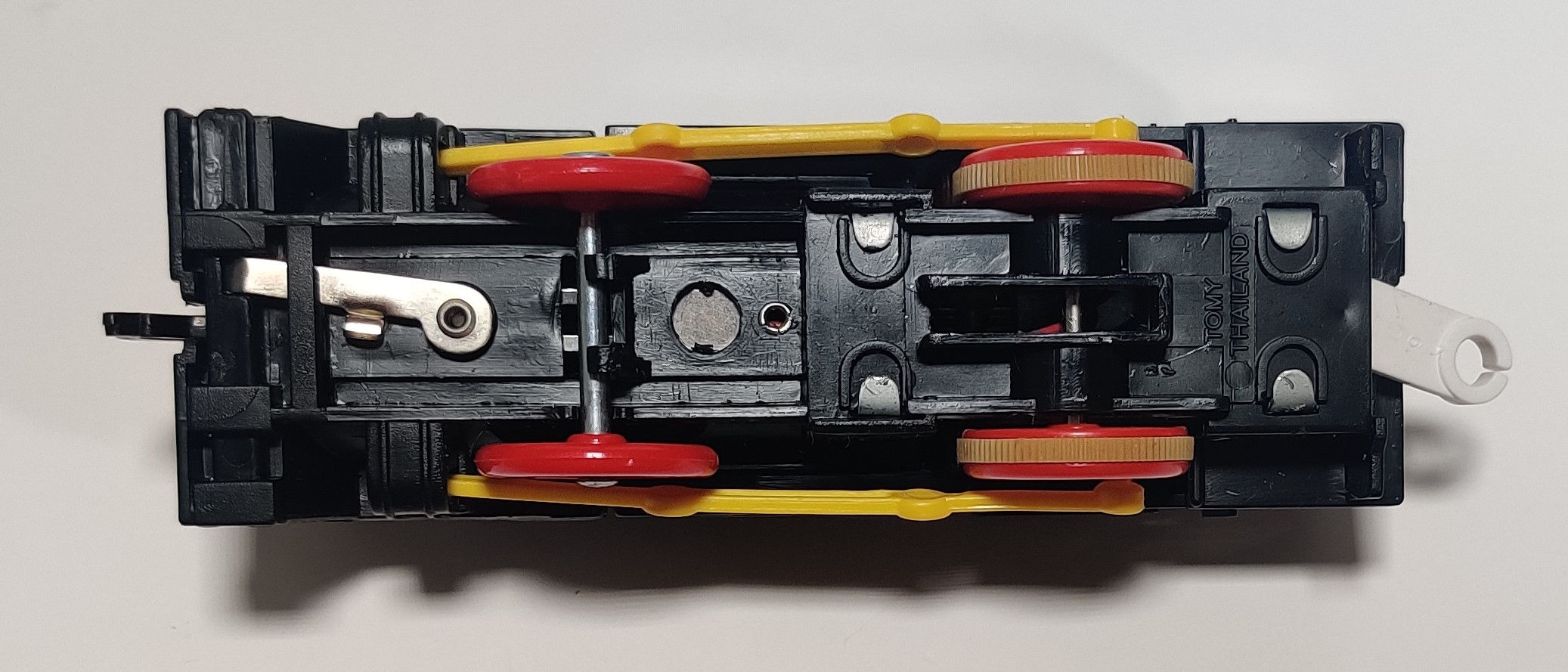
My boxed Thailand-made old power C12 was produced in April 1992. The chassis and shell are updated with Thailand text but are otherwise externally the same as previous releases. Stickers cover some of the exposed silver contact strips and the clicker noisemaker in the gearbox has been removed. As far as I can tell, the C12 and D51 metal old power gearbox never had the clicker mechanism after moving to Thailand, with the only Thailand-made clicking noisemakers appearing in late old power Mickey Poppos.
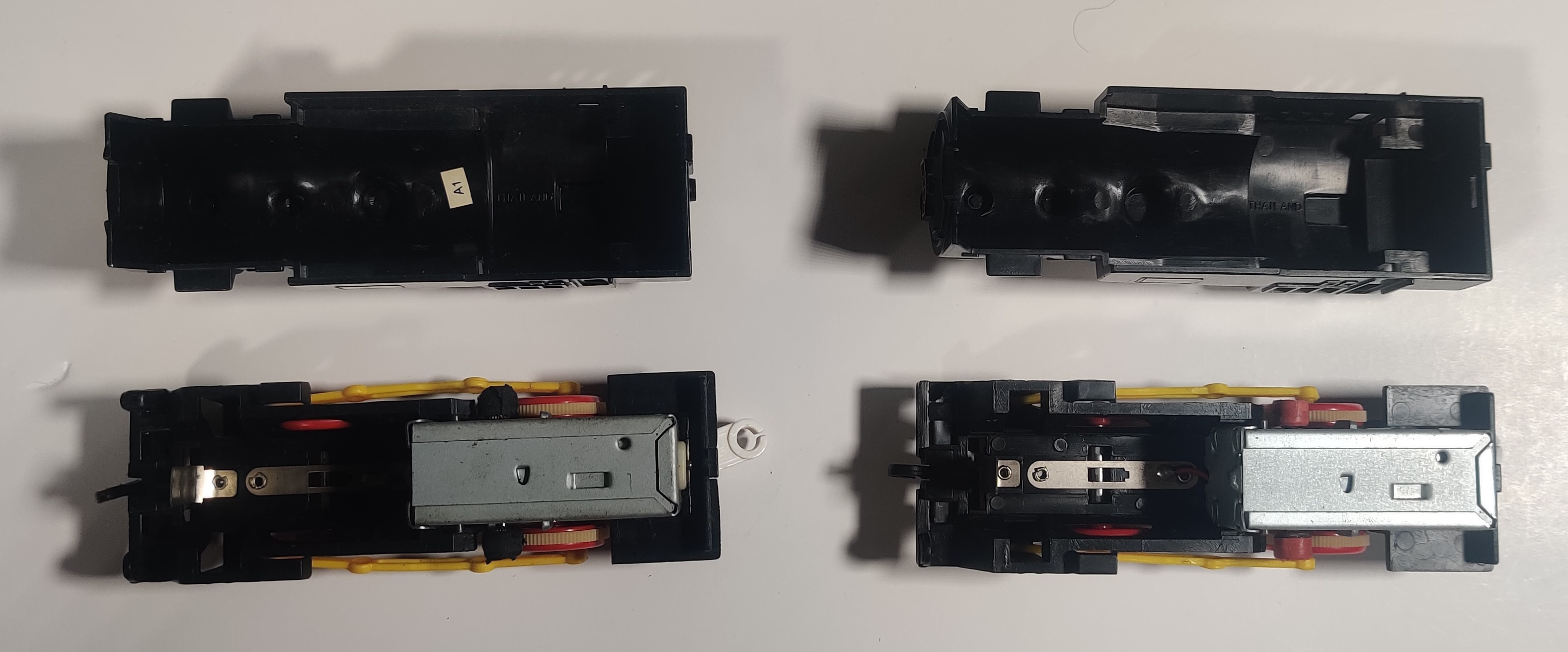

I have a few other Thailand-made C12s from this era. One was produced in January 1991, another from June 1994 towards the end of old-power C-12 production, and a third that has lost its production code sticker. These Thailand-made trains all lack the clicking chuffer. It seems that either the sticker over the contact strips were prone to falling off or only added slightly later (or both).
C12 Steam Locomotive (1994)
Late in the sixth generation the C12 was converted for new power and released in a sixth generation box as C12 Steam Locomotive (C-12蒸気機関車). This was the first new power C12 release. The new power C12 is explored in more detail below.
C12 Steam Locomotive (1995)
The new power C12 was rereleased in seventh generation packaging in 1995 again as C-12蒸気機関車.

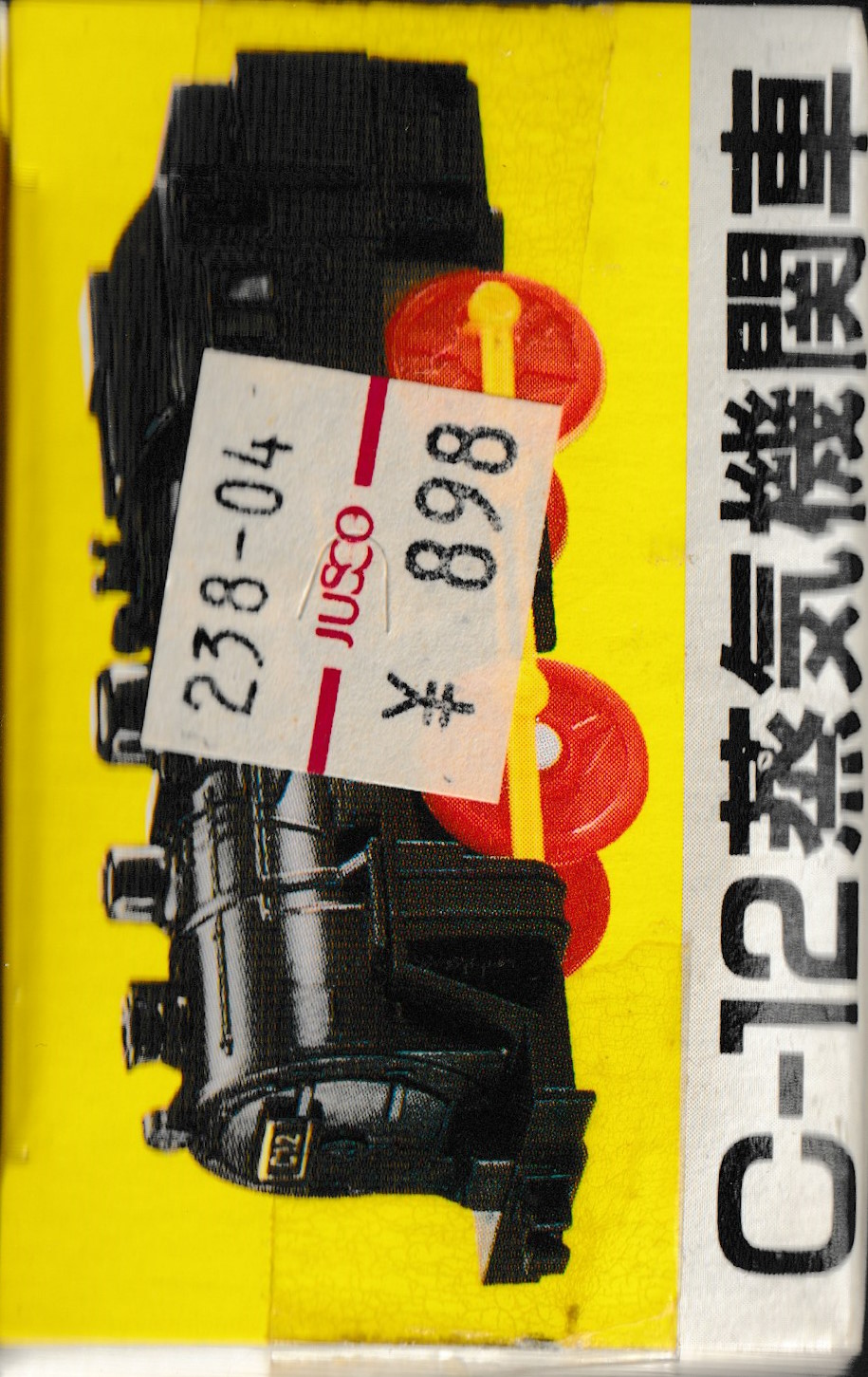
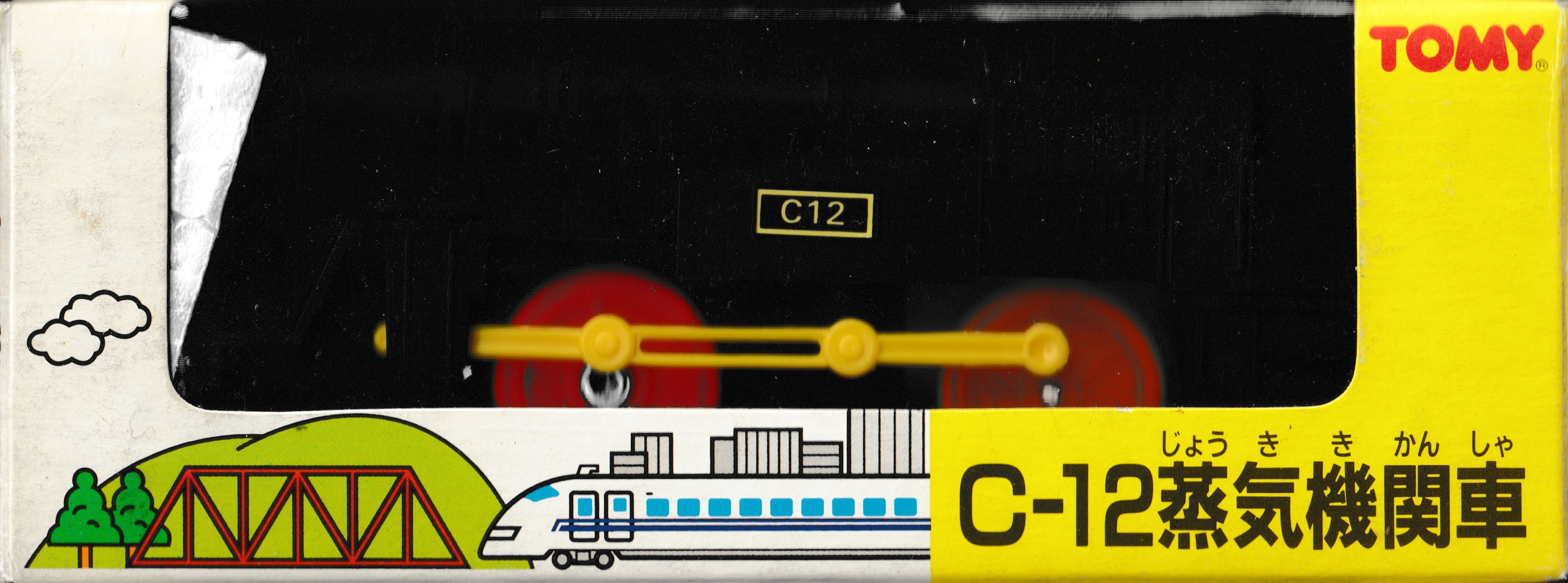
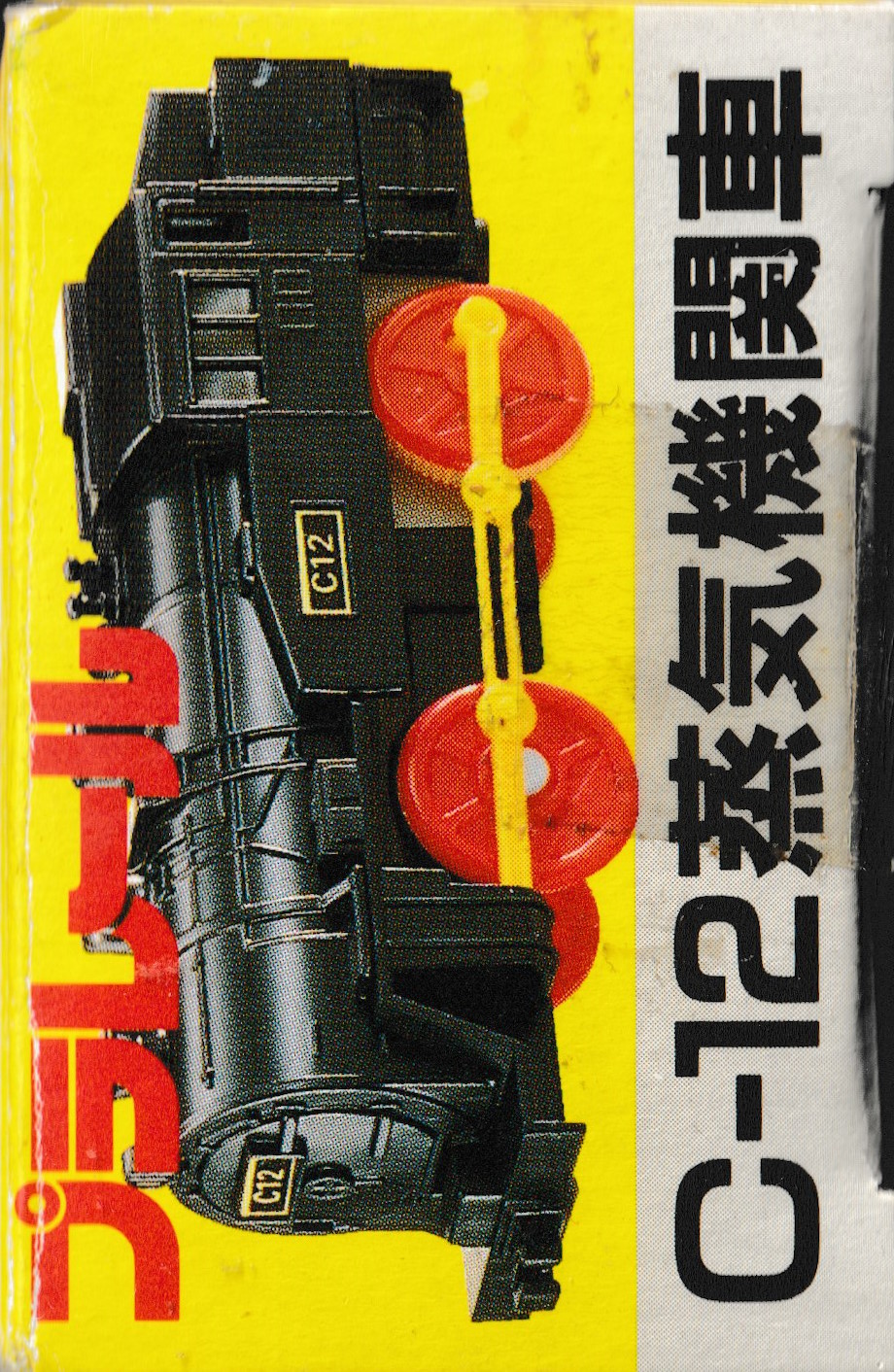

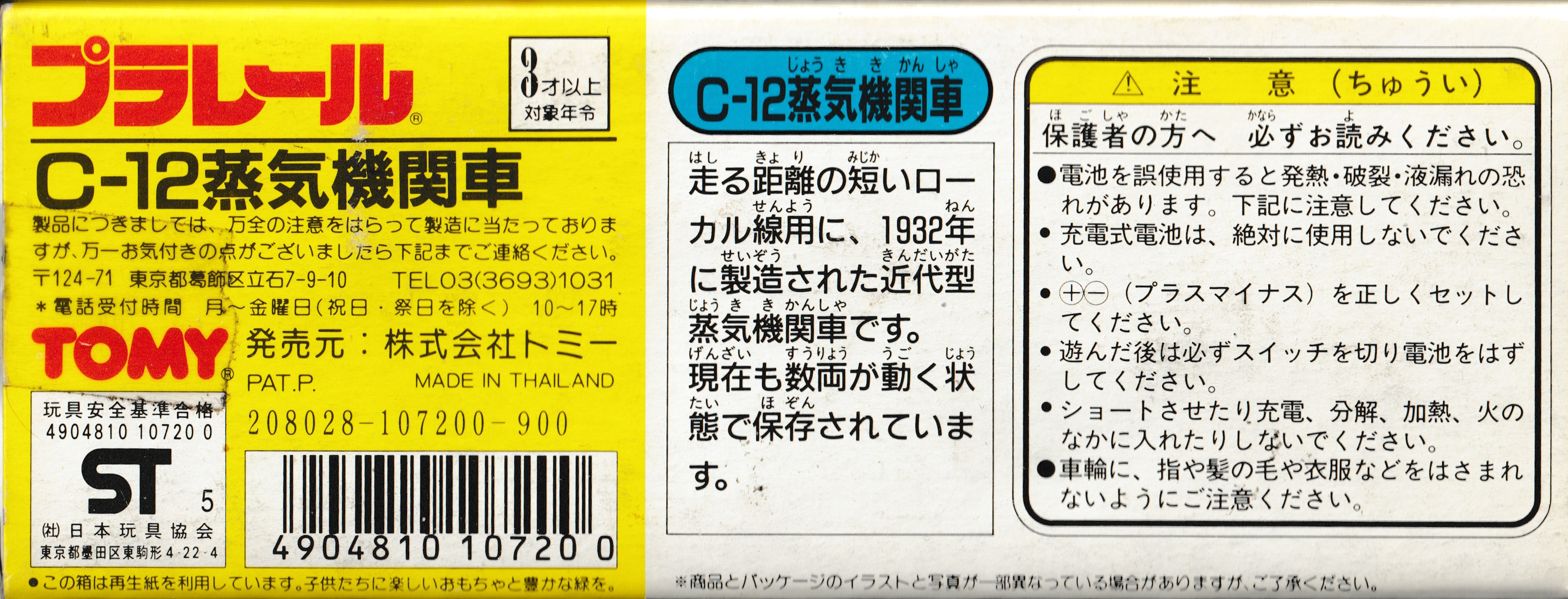
The back of the box says (approximately) of the C-12: "This is a modern steam locomotive built in 1932 for short-distance railway lines. Several cars are still preserved in working condition." The yellow panel to the left has Tomy's contact information and the right panel has some safety information.
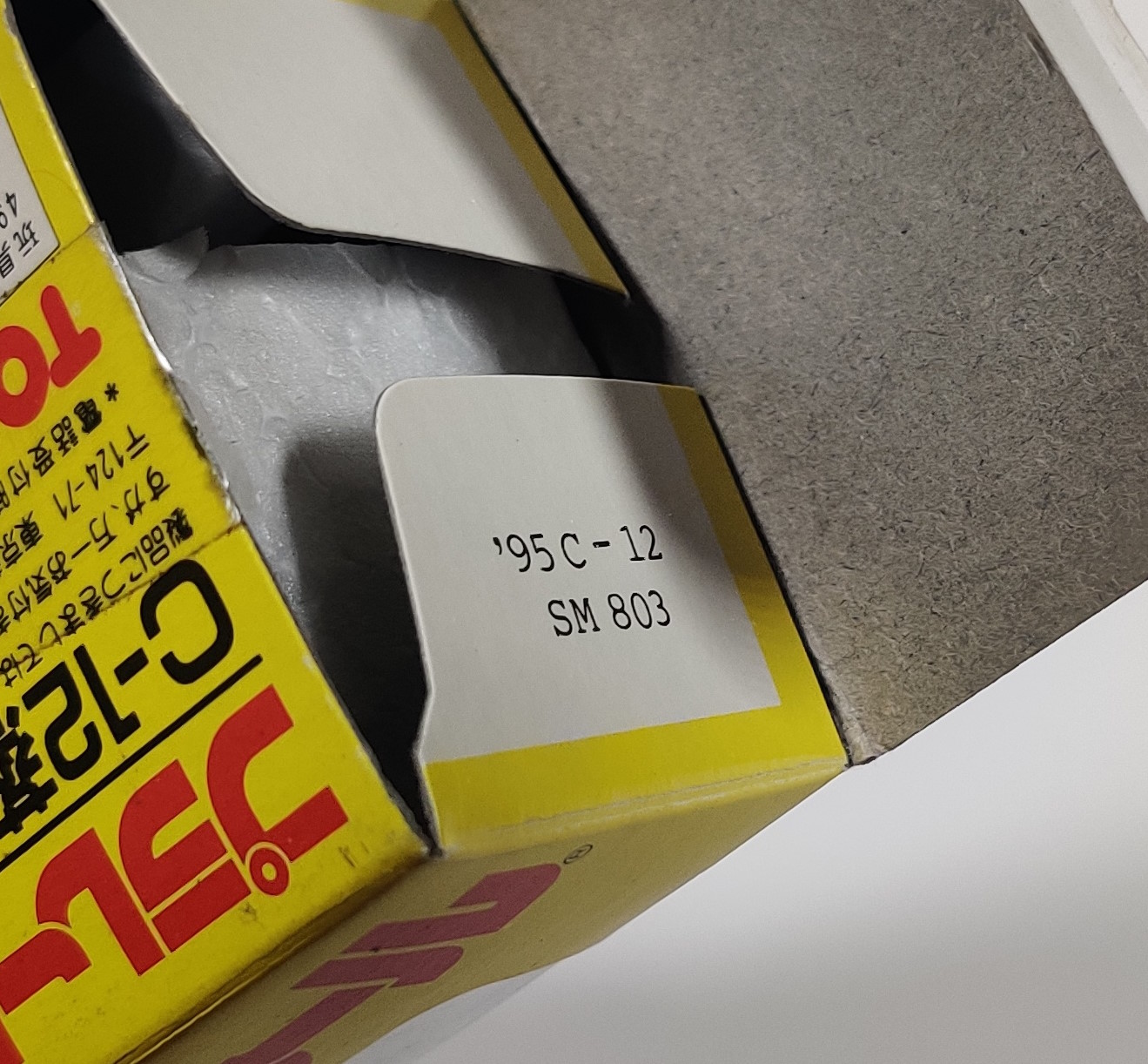
The box flap for this release refers to it as the '95 C-12.
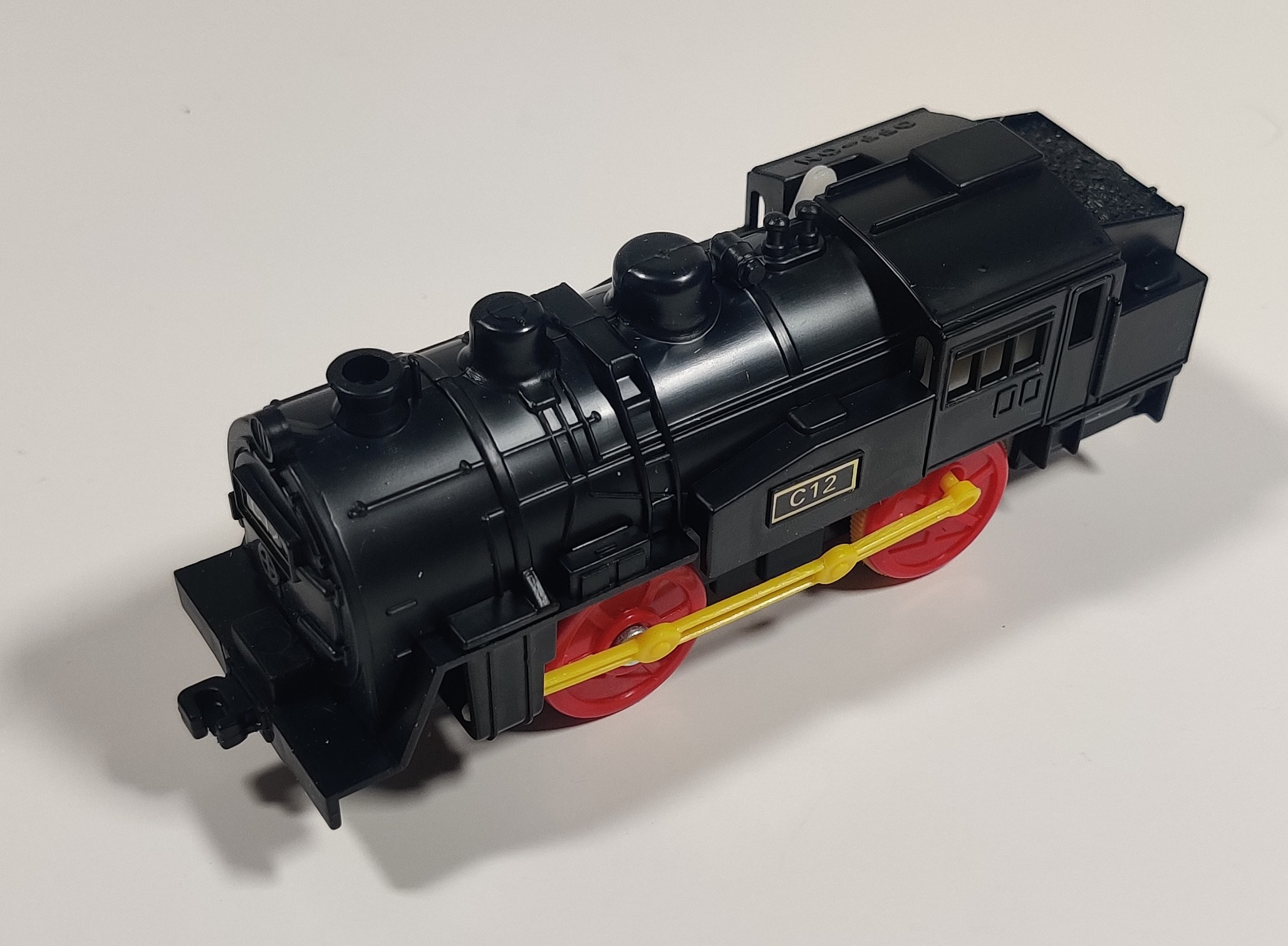
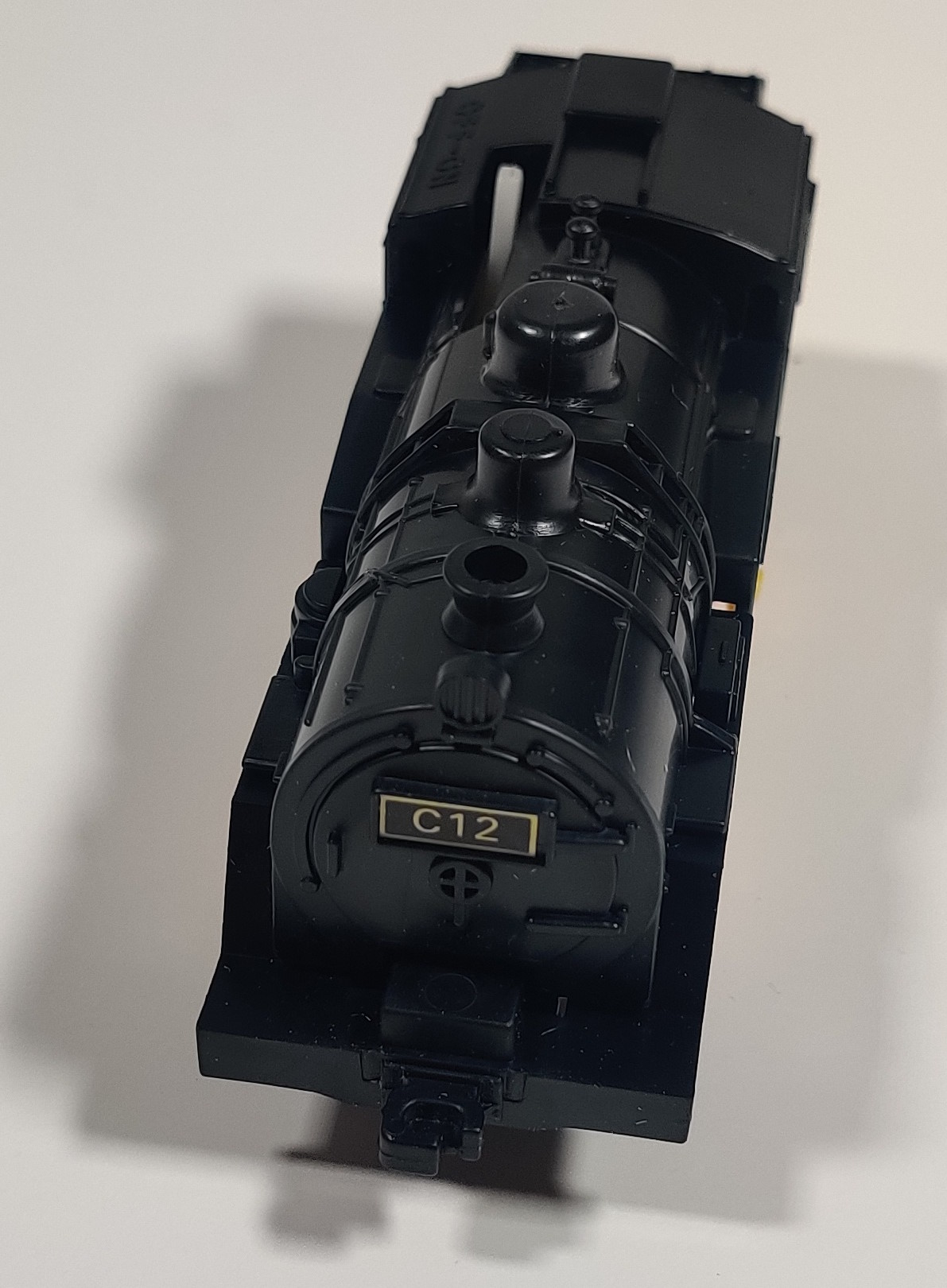
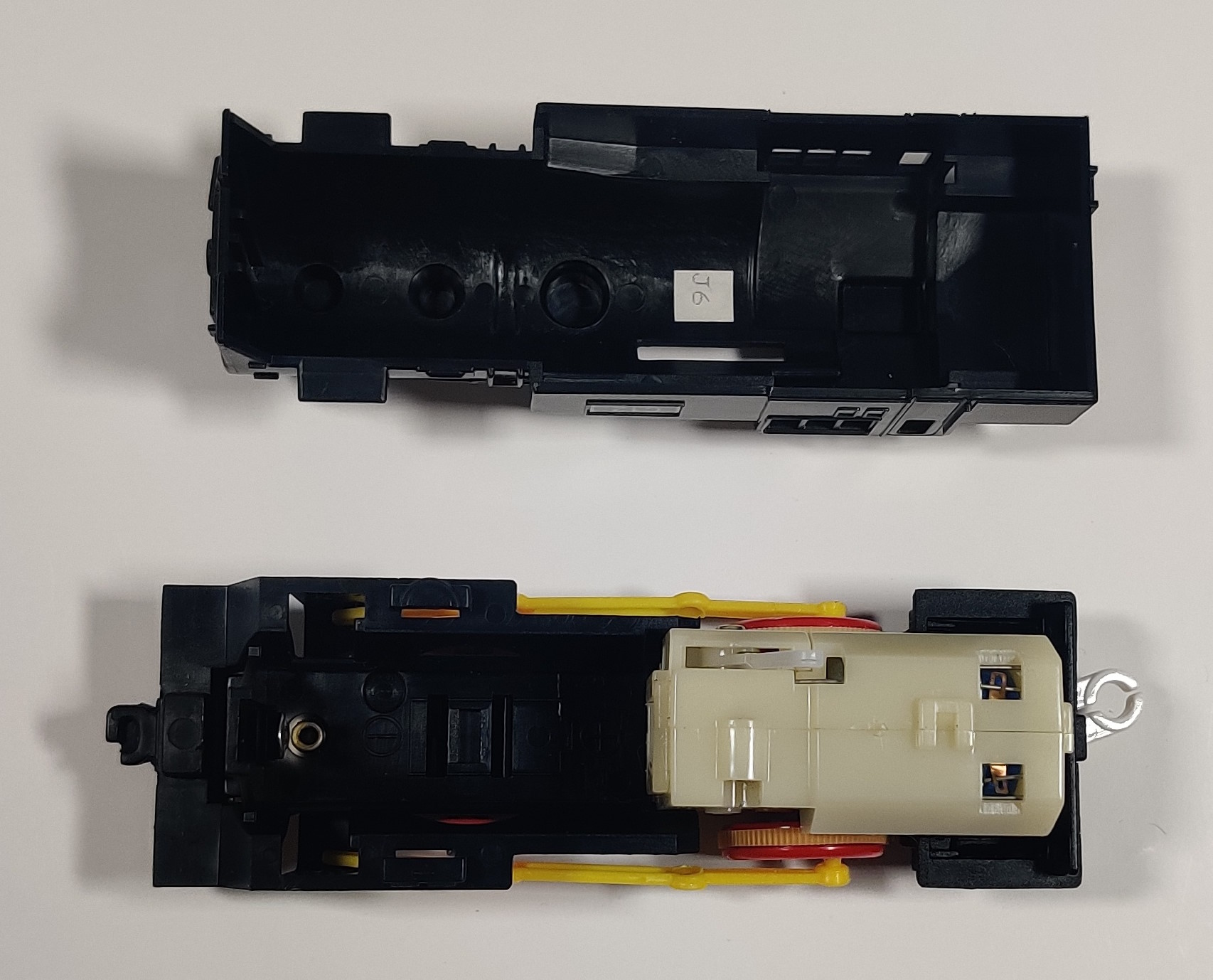
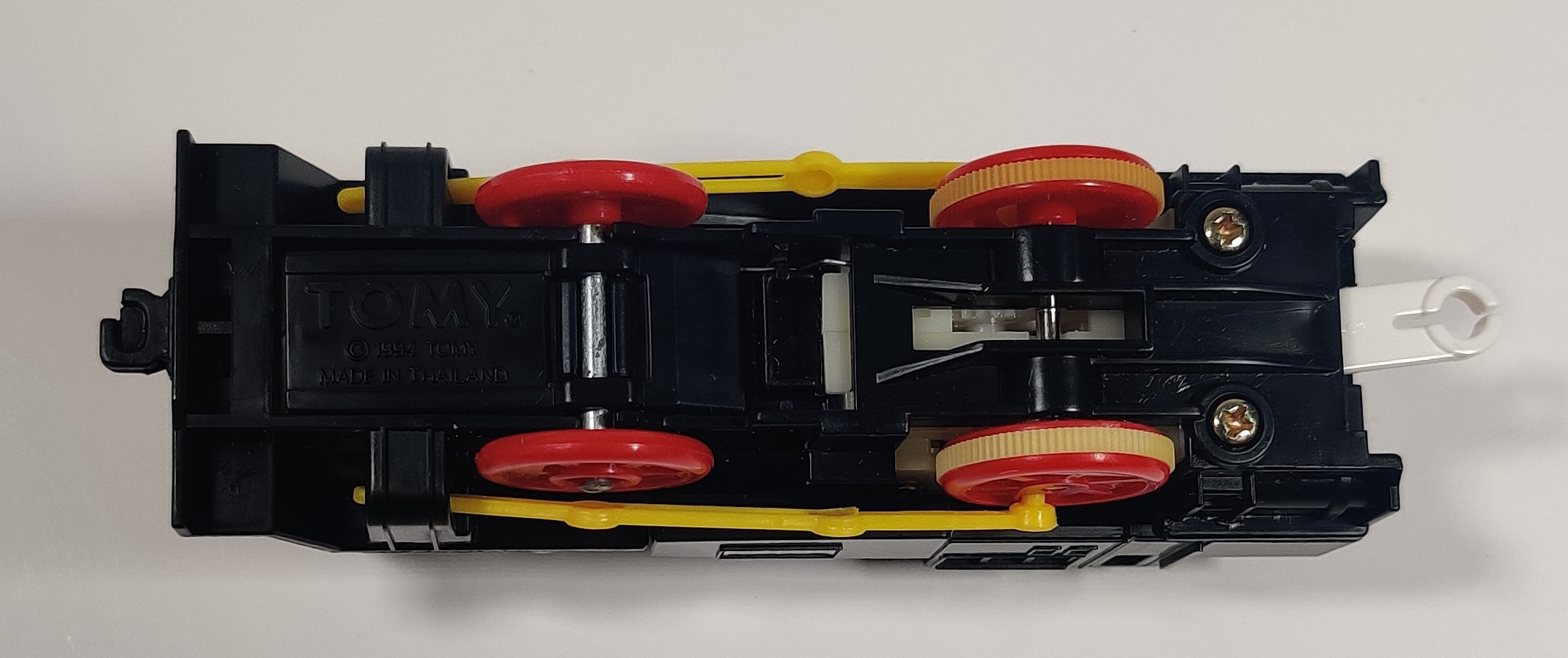
Although the majority of the design was carried over from the old power C-12, the new power C12 has a few disappointing changes like the loss of the functioning front coupler dating back to the C12's early days pushing the rotary snowplow. The power switch has, of course, been moved off of the running board lamp and up to the side of the boiler. The chassis has different molding underneath and to accommodate the new direct drive gearbox. My boxed example dates to January of 1995. This version of the C-12 remained on sale until 2003.
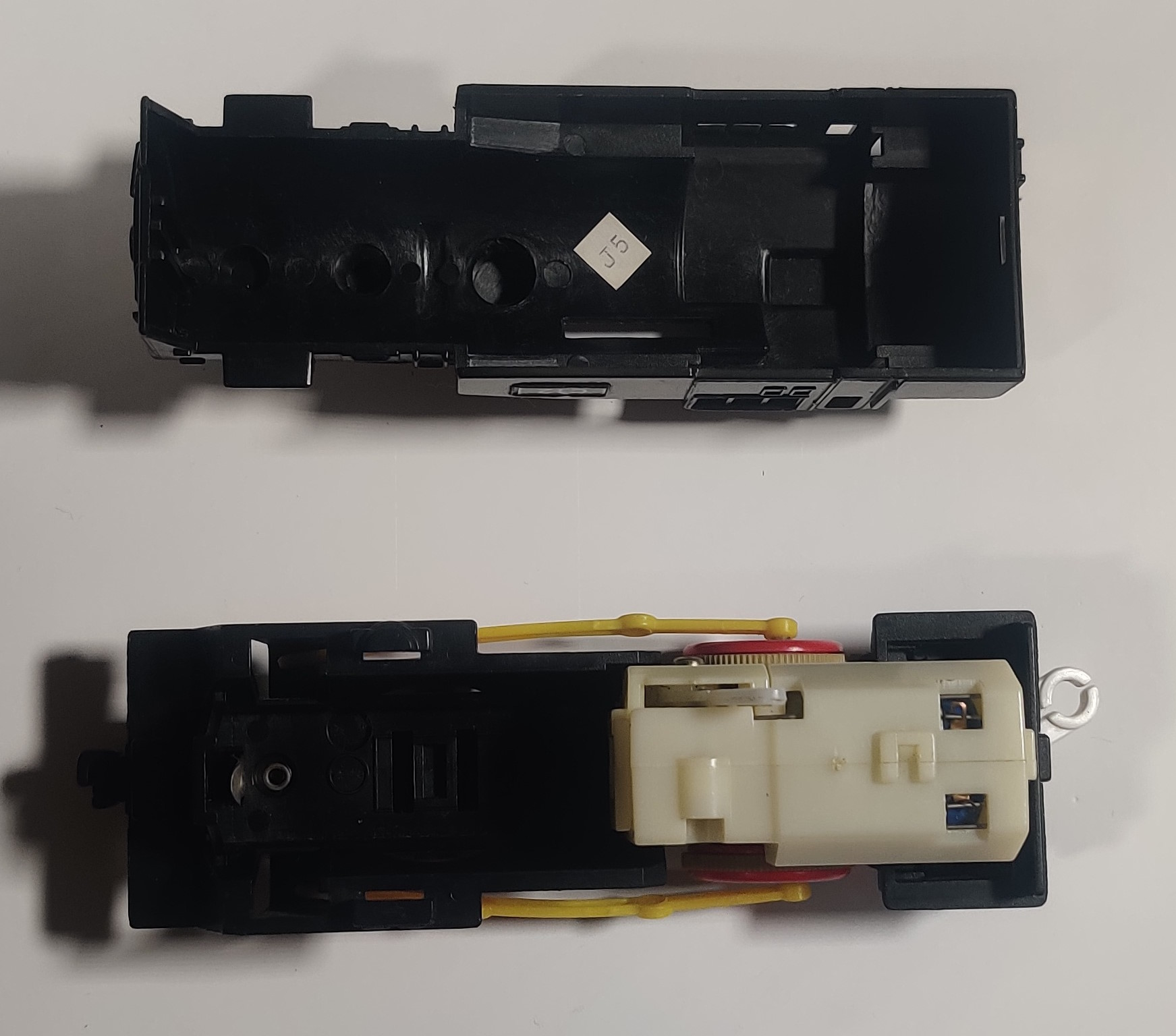
I have a second new power C12 of this generation dating from October 1995.

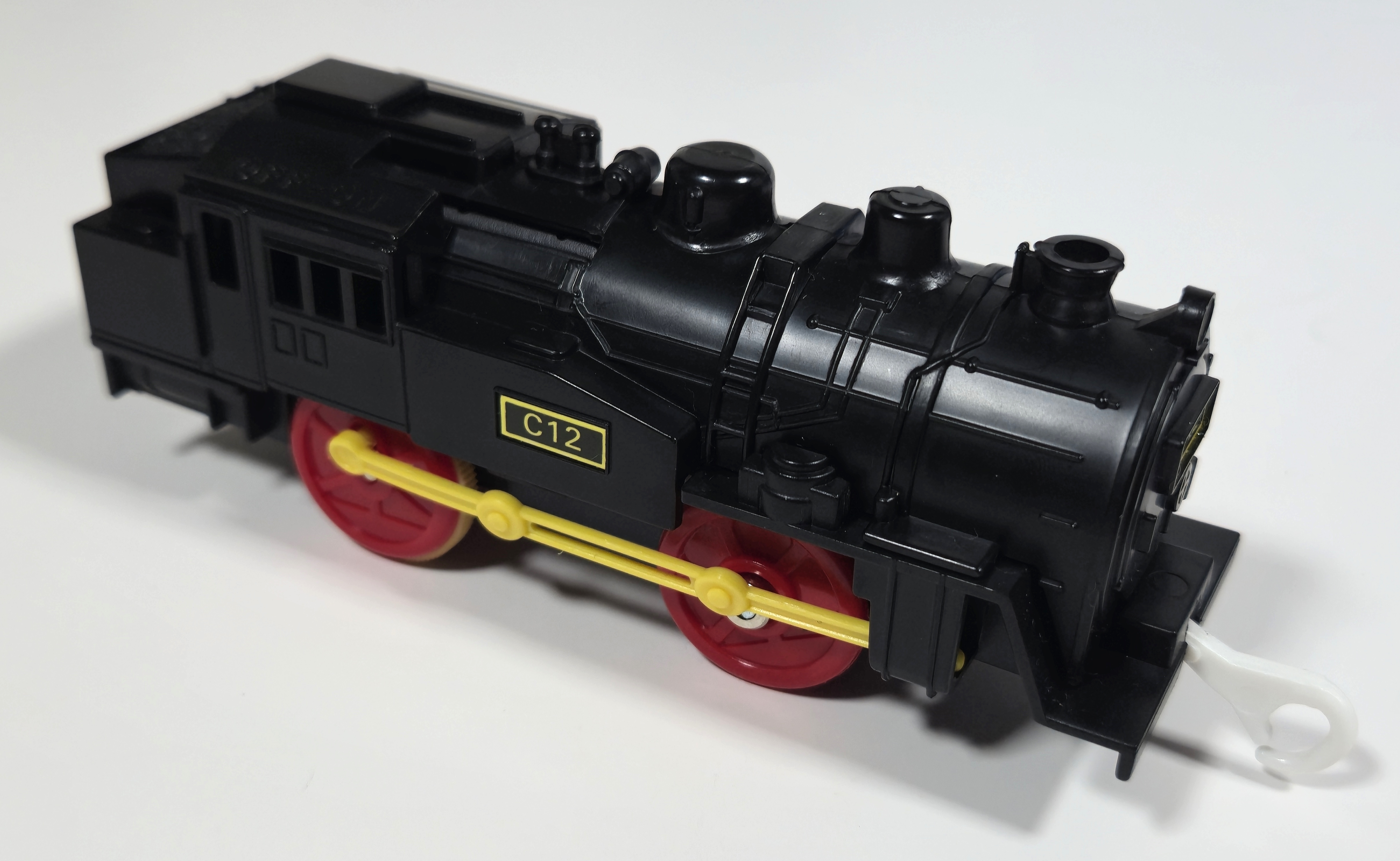
In 1999 for Plarail Day Tomy reproduced the old C-12 with Rotary Snowplow. This reissue has the snowplow itself powered and pulling an unpowered C12 based on the new power tooling on a dummy chassis behind it.

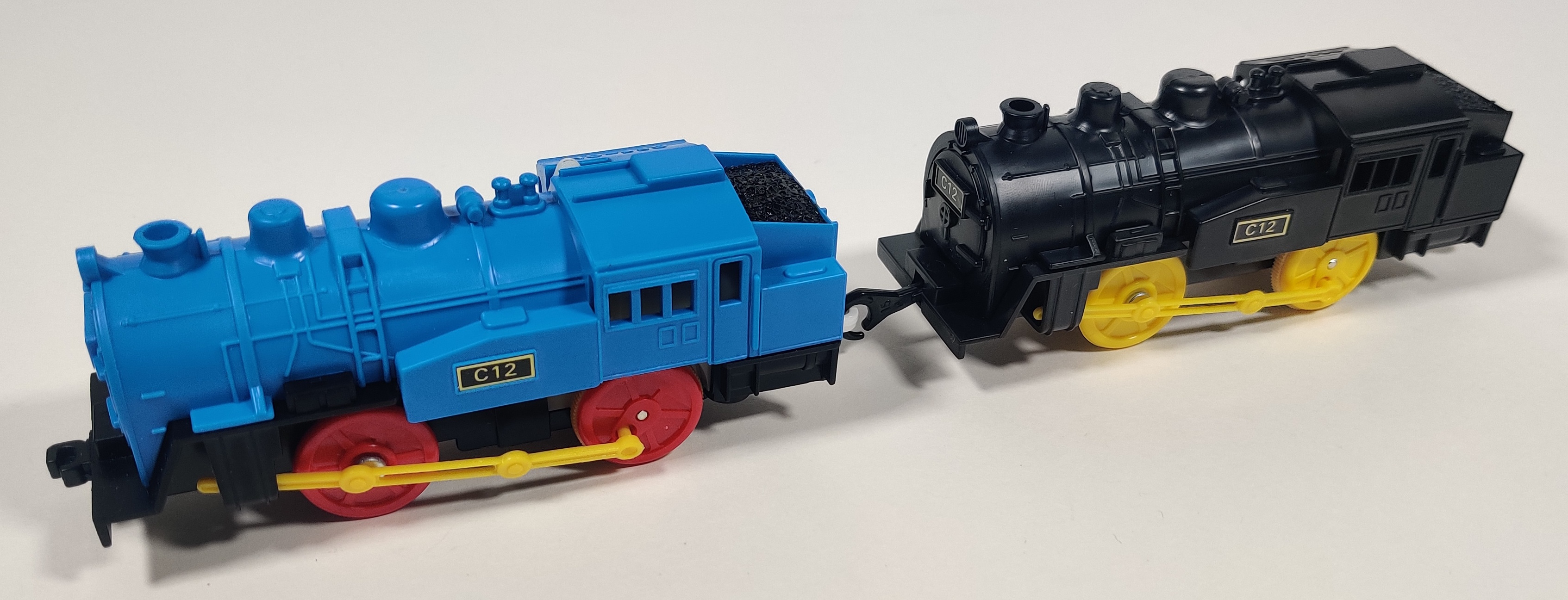
An even more limited (3000 produced) 20th Century Toy Museum Exhibition Rotary Snowplow version was also produced which had a much more eye-catching blue unpowered C12. After removing a screw these C-12 body shells can fit on other chassis, although there is not so easy a way to swap out the yellow wheels to a powered chassis... With its spinning blades and new power mechanism this snowplow is a very nice homage to the original Plarail C-12 release.
7560 Animal Express (Tomica World)

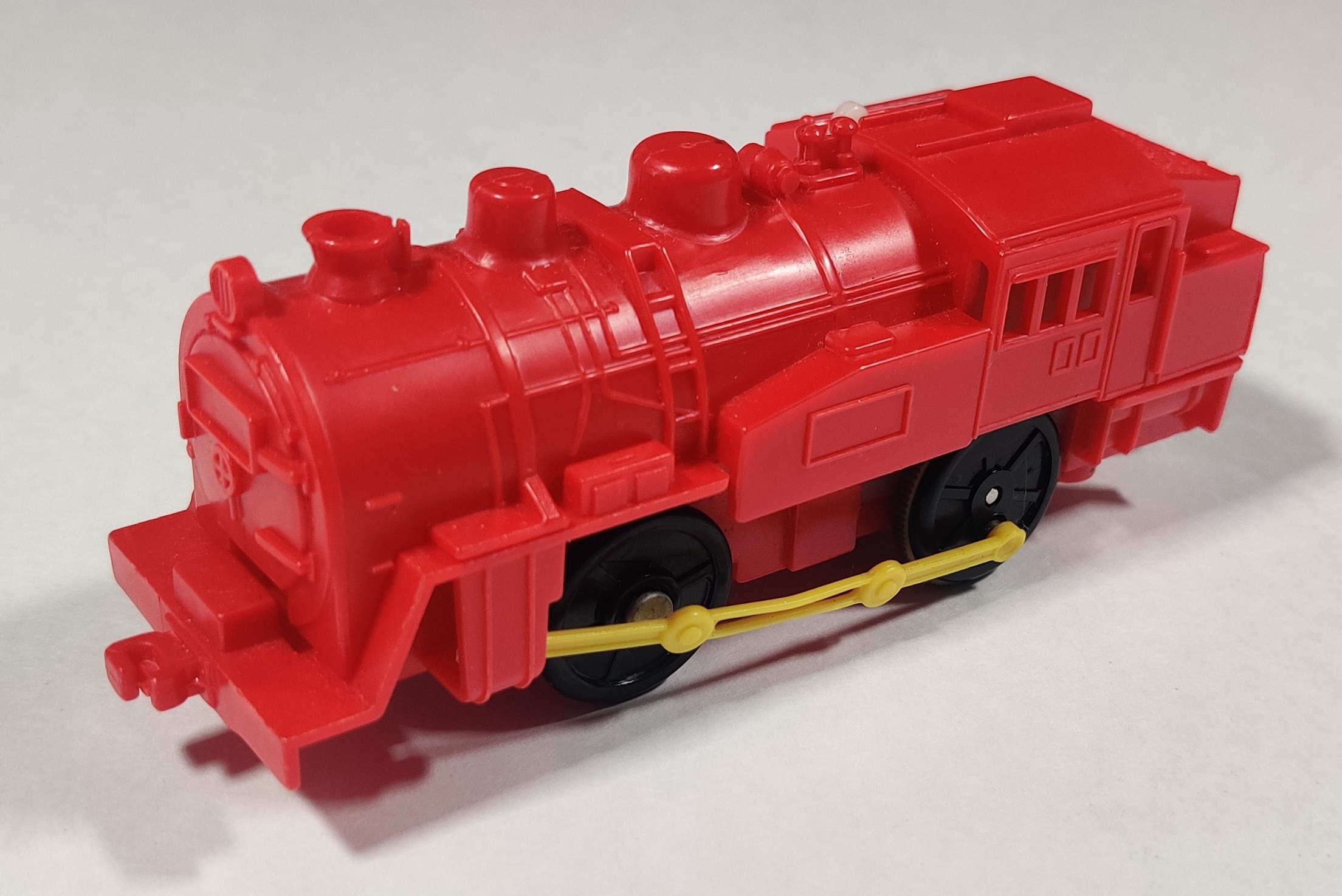
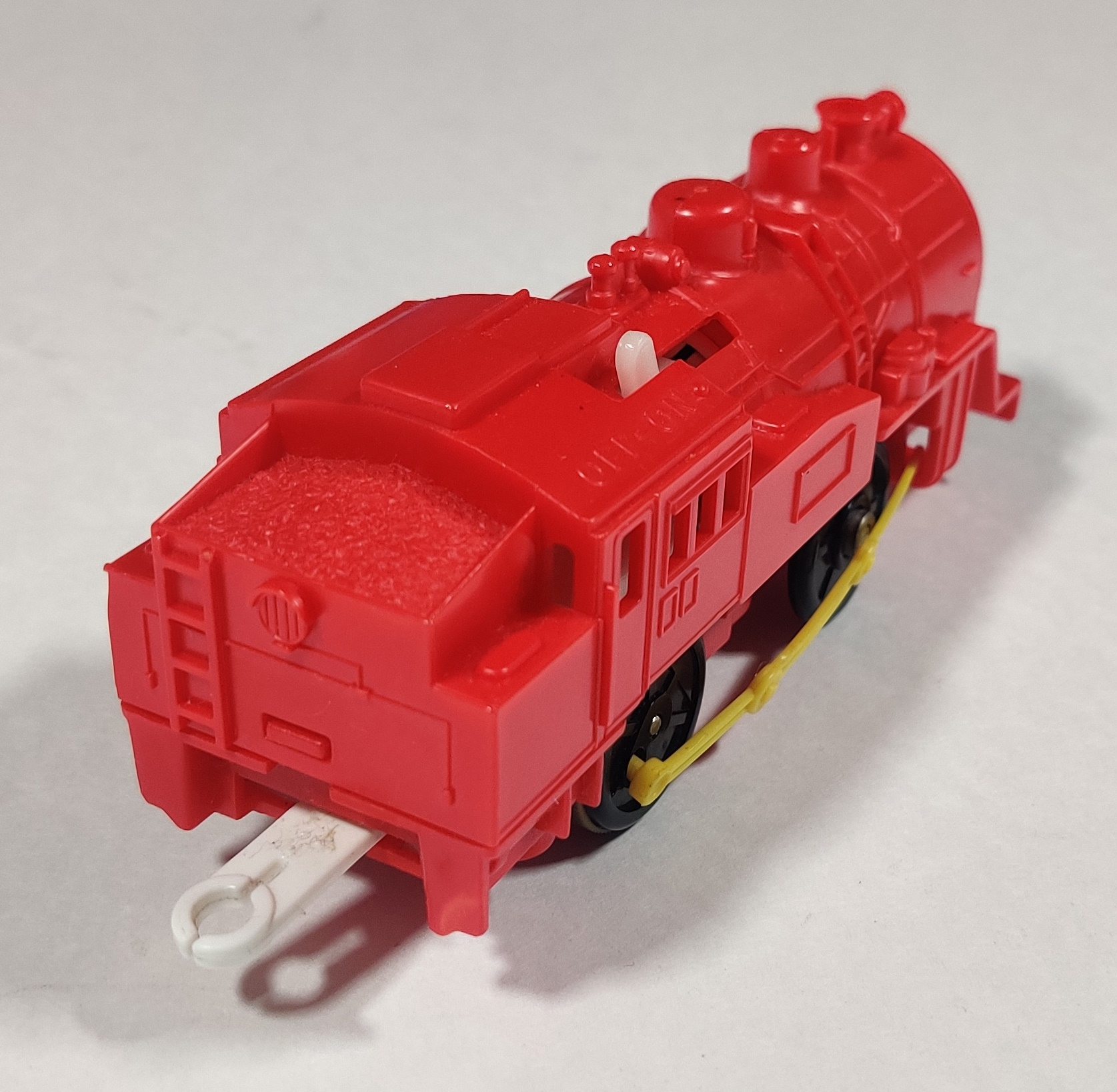
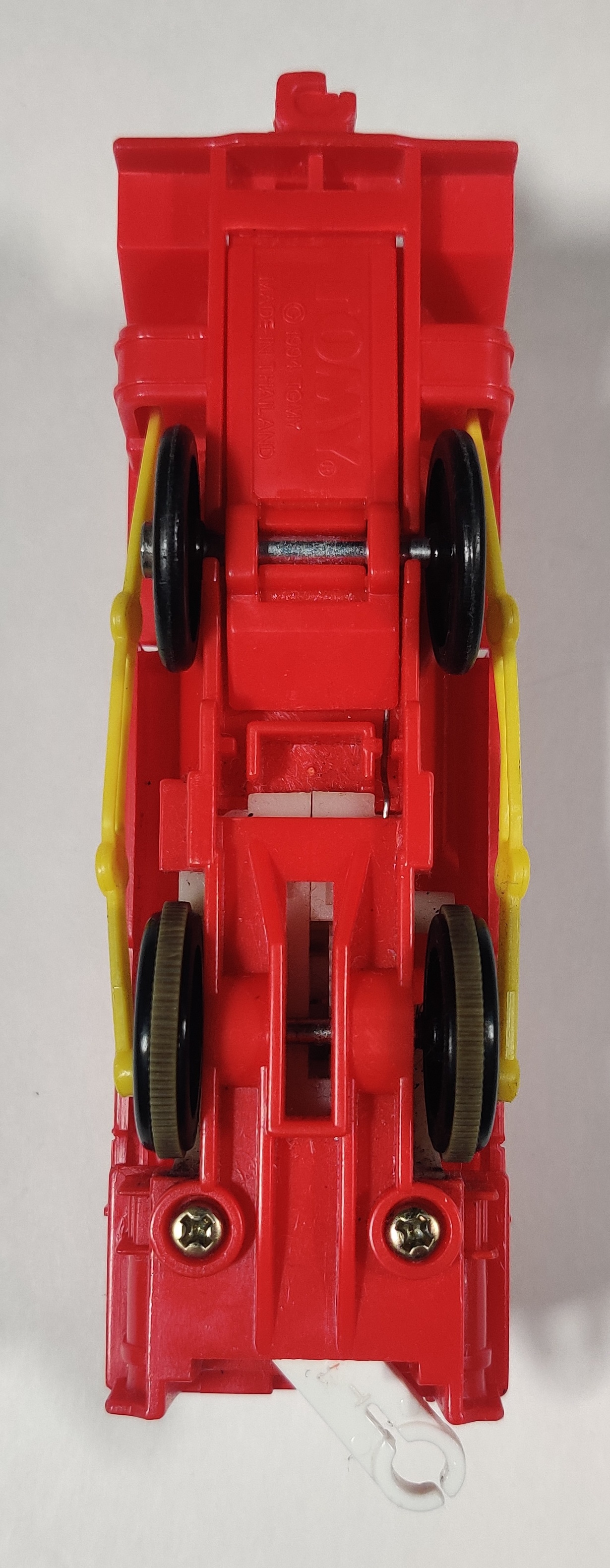
Around 2001 new power C12s were released in Europe as part of the Tomica World export range in red with black wheels as part of the 7560 Animal Express train. The tooling had already been updated with the new squared-off Tomy logo by this point.
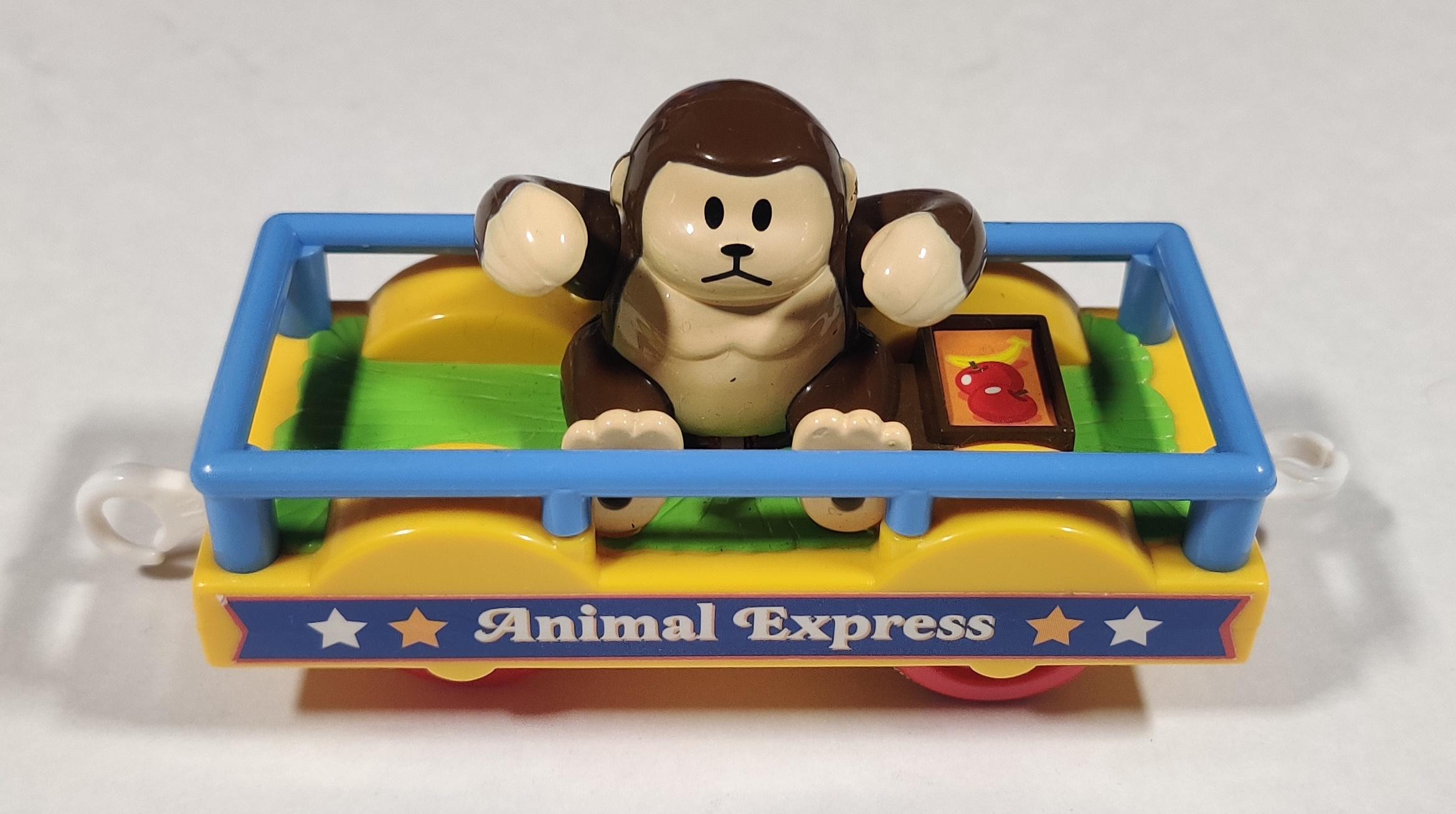
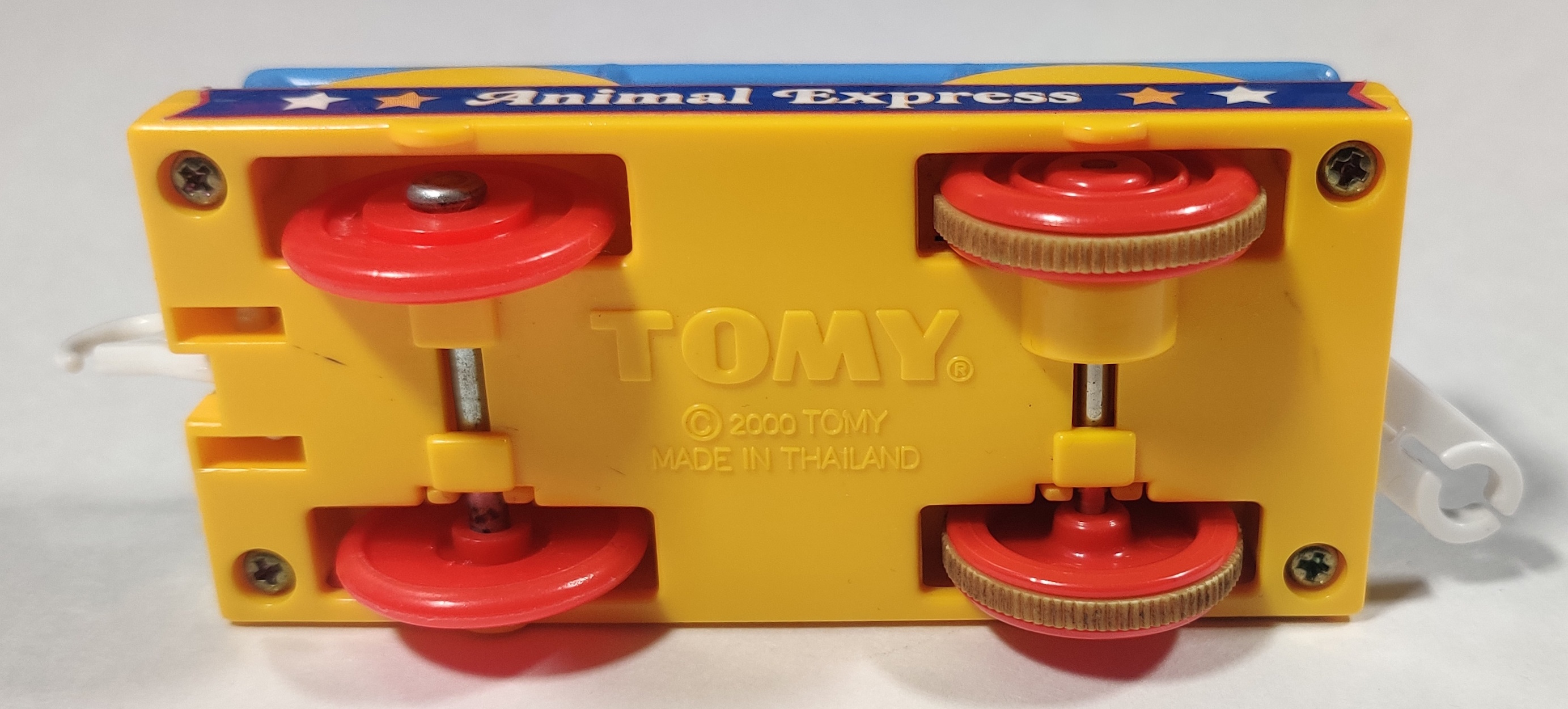
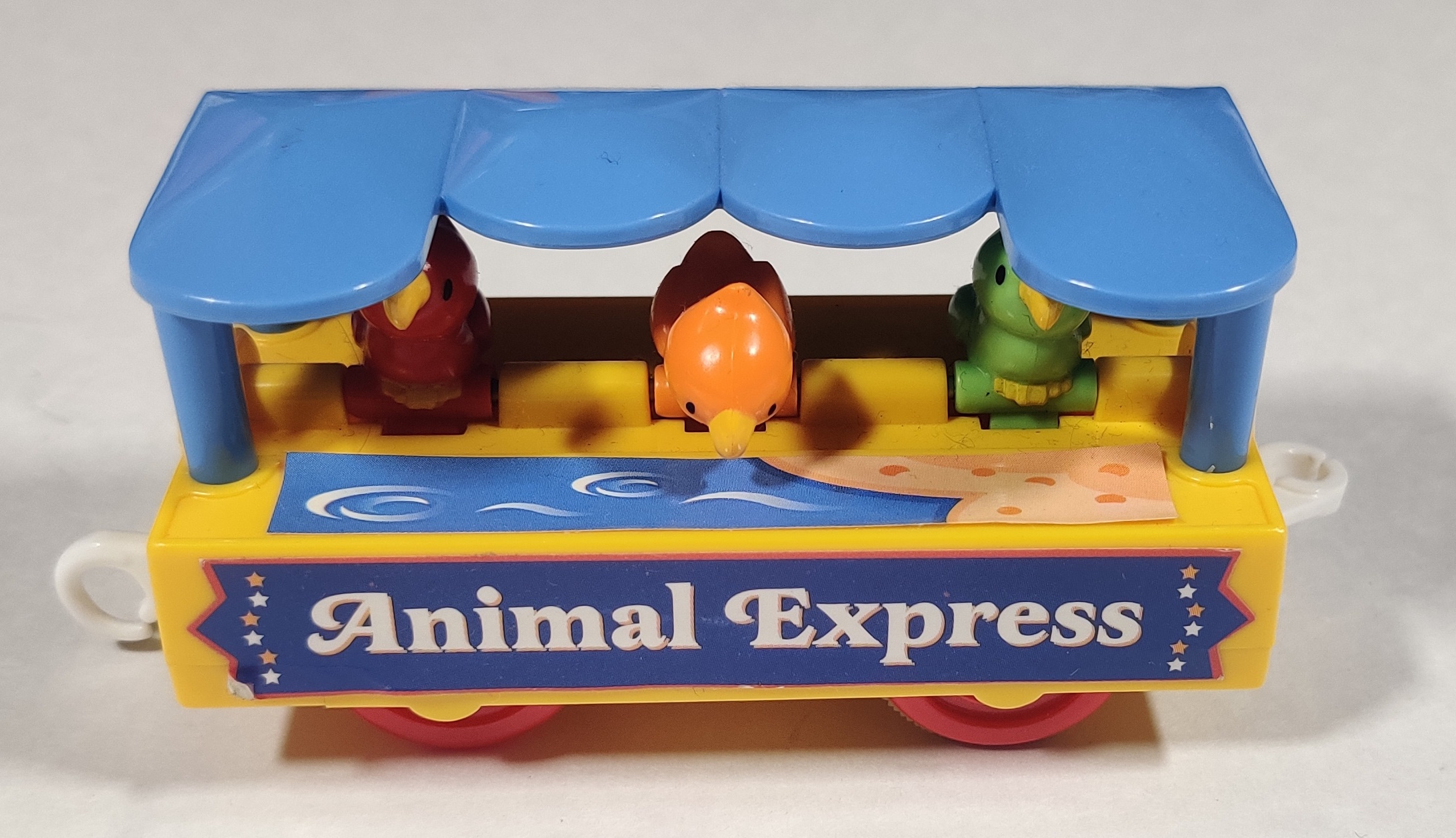
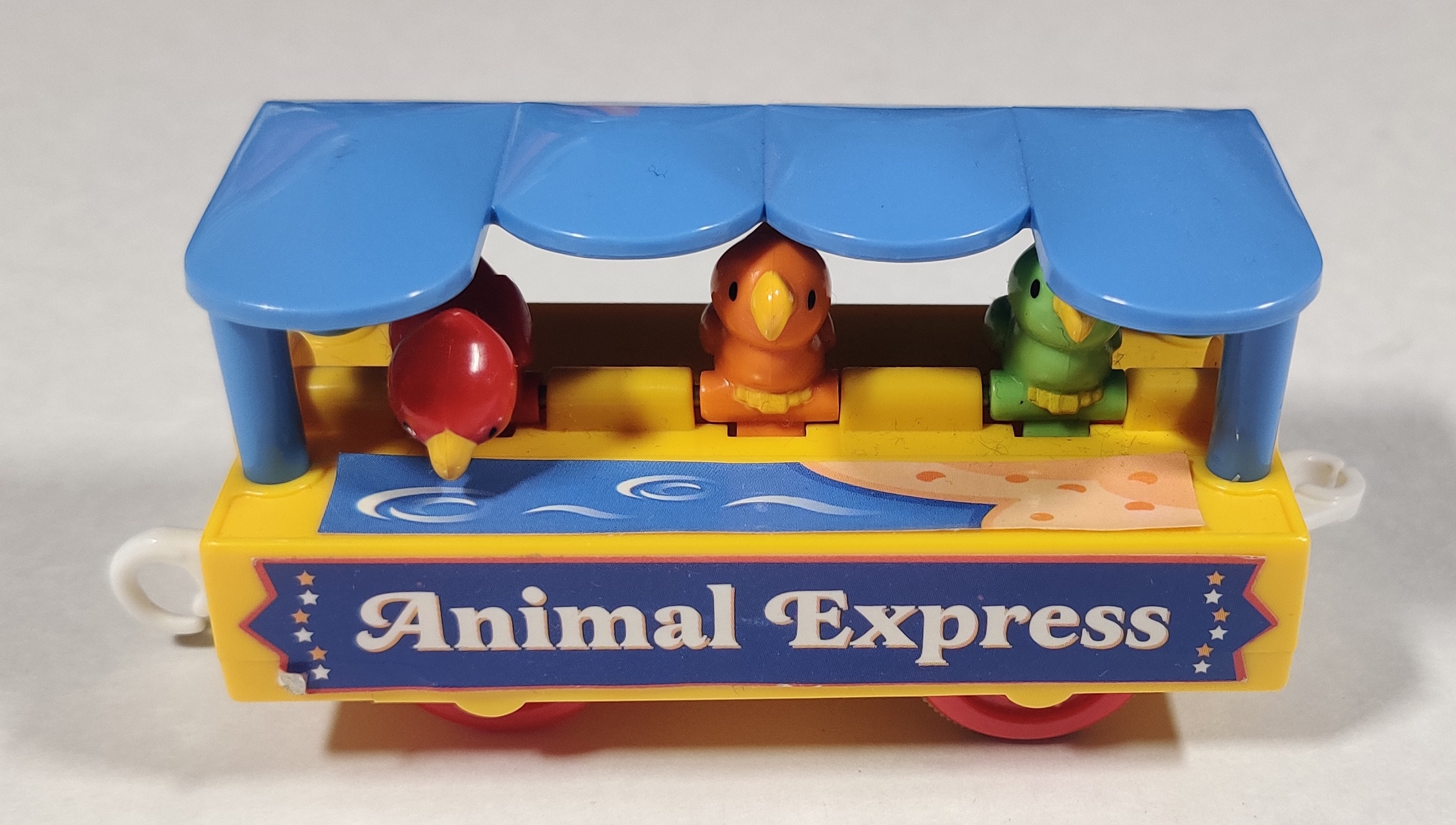
The two included freight cars are new versions of two action wagons previously released in Japan as part of the Fun Circus Train.
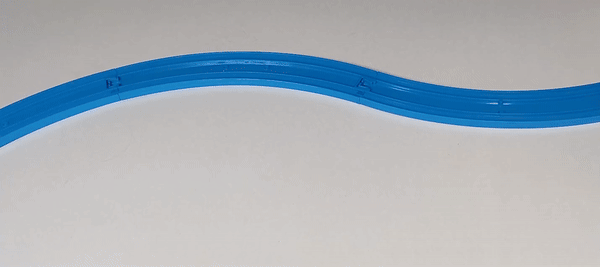
As the train runs, the monkey beats its chest and the three birds peck down in turn.
The new power C12 was released in a three-pack eighth generation box with wasp stripe smoke box as PlaKids C12 Steam Locomotive. The pack included two coaches with removable roofs and two PlaKids figures and was rereleased in 2003 as S-29 PlaKids C12 Steam Locomotive. Also in 2003 the new power C12 was released individually as K-05 C12.
KF-01 C12 Steam Locomotive (2011)


In 2009 a redesigned C12 that uses a AA battery instead of a C battery and is thus much more representative of the real C-12 steam engines was included in the C12 Steam Locomotive Arch Bridge and Rail Set.
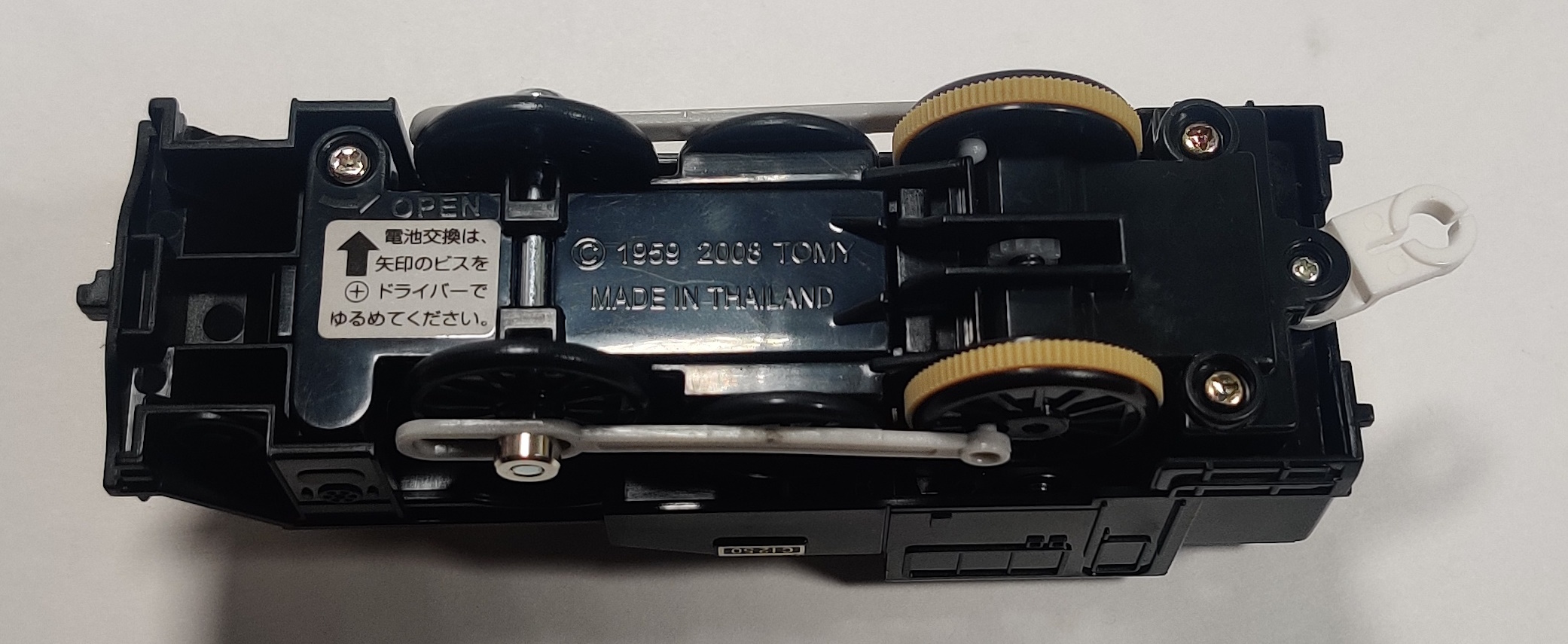
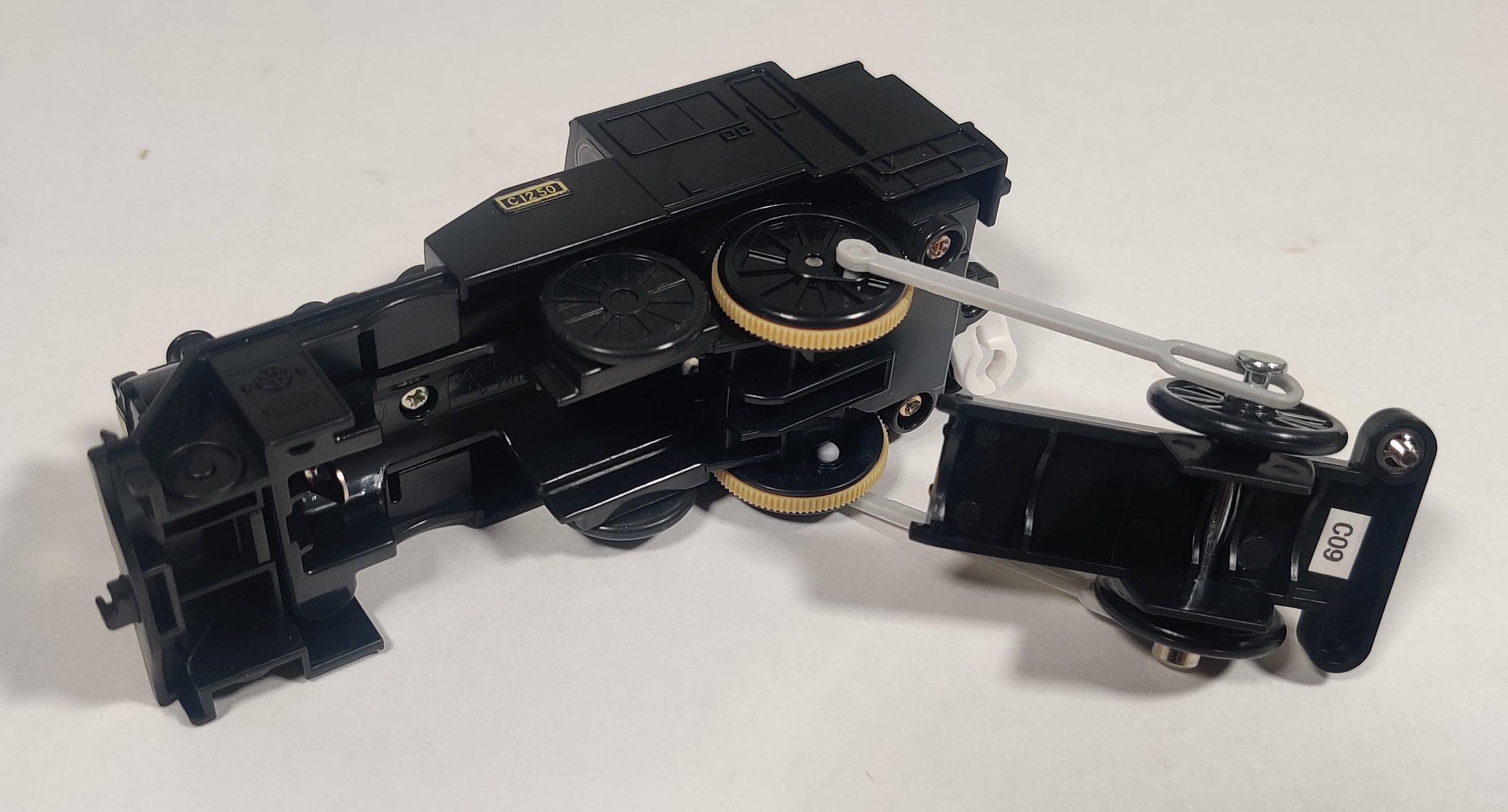
The train's front wheels swing down to insert the battery. On January 20, 2011 this redesigned C-12 was released individually as KF-01 C12 Steam Locomotive, with both the set and individual release carrying the running number C12 50.